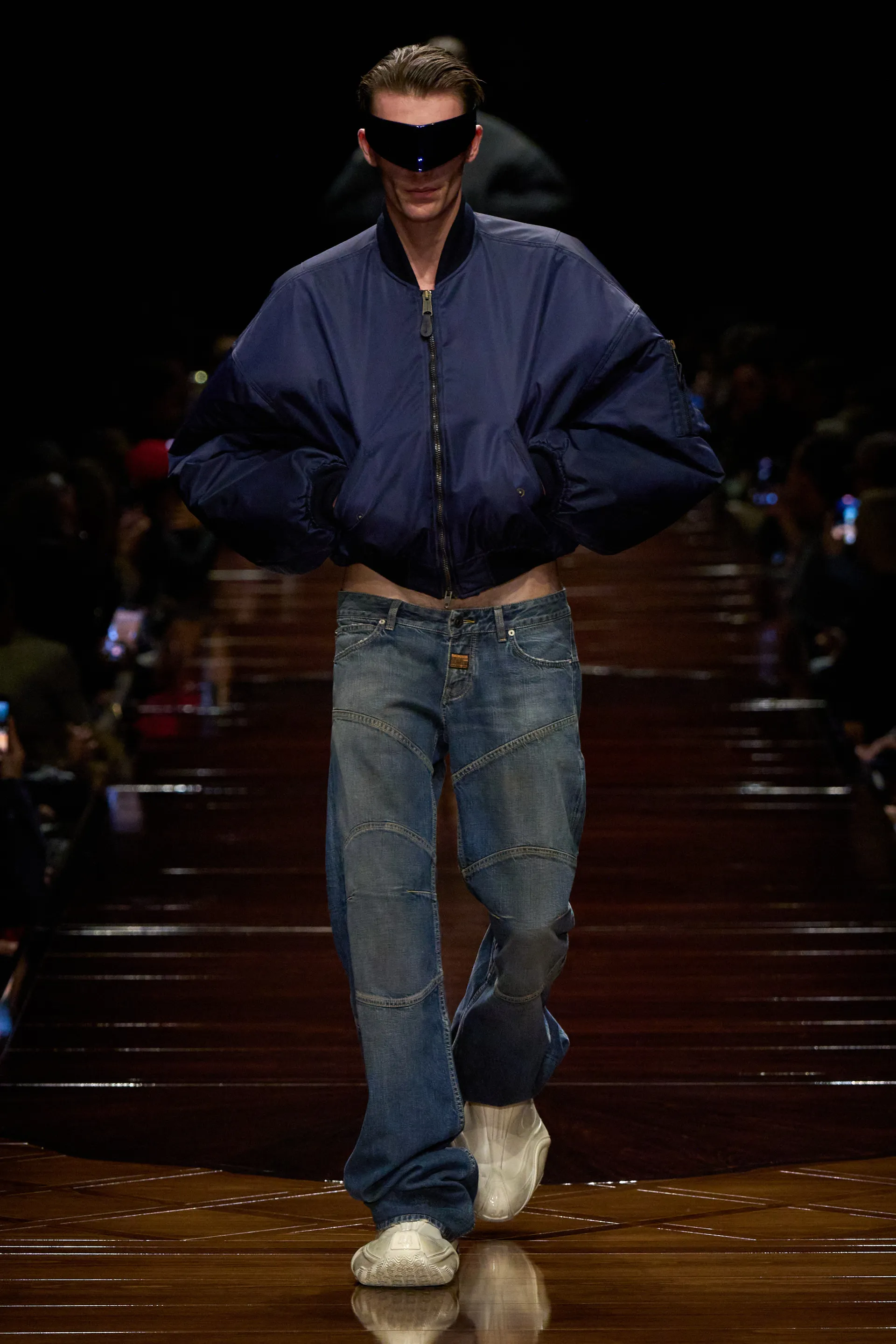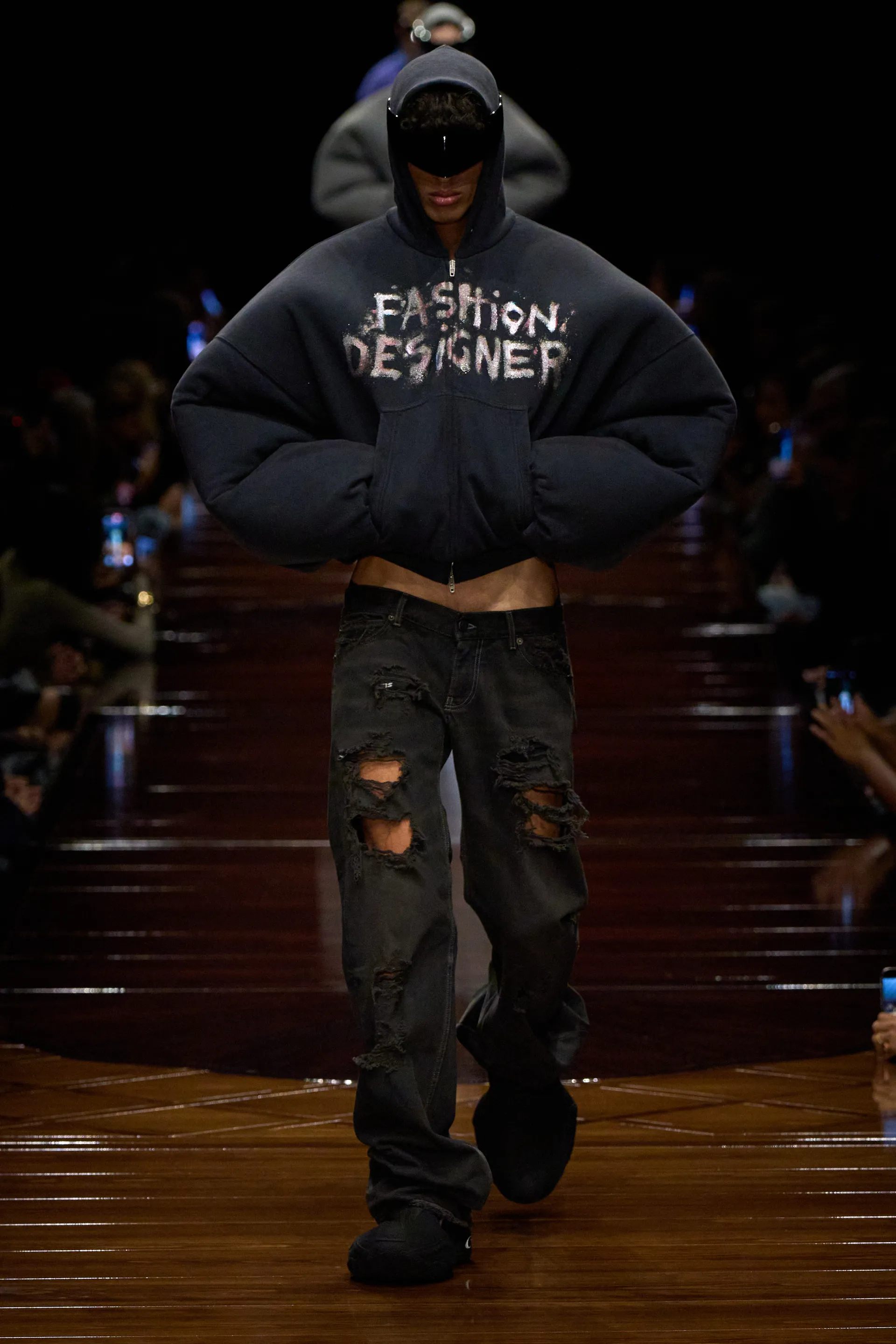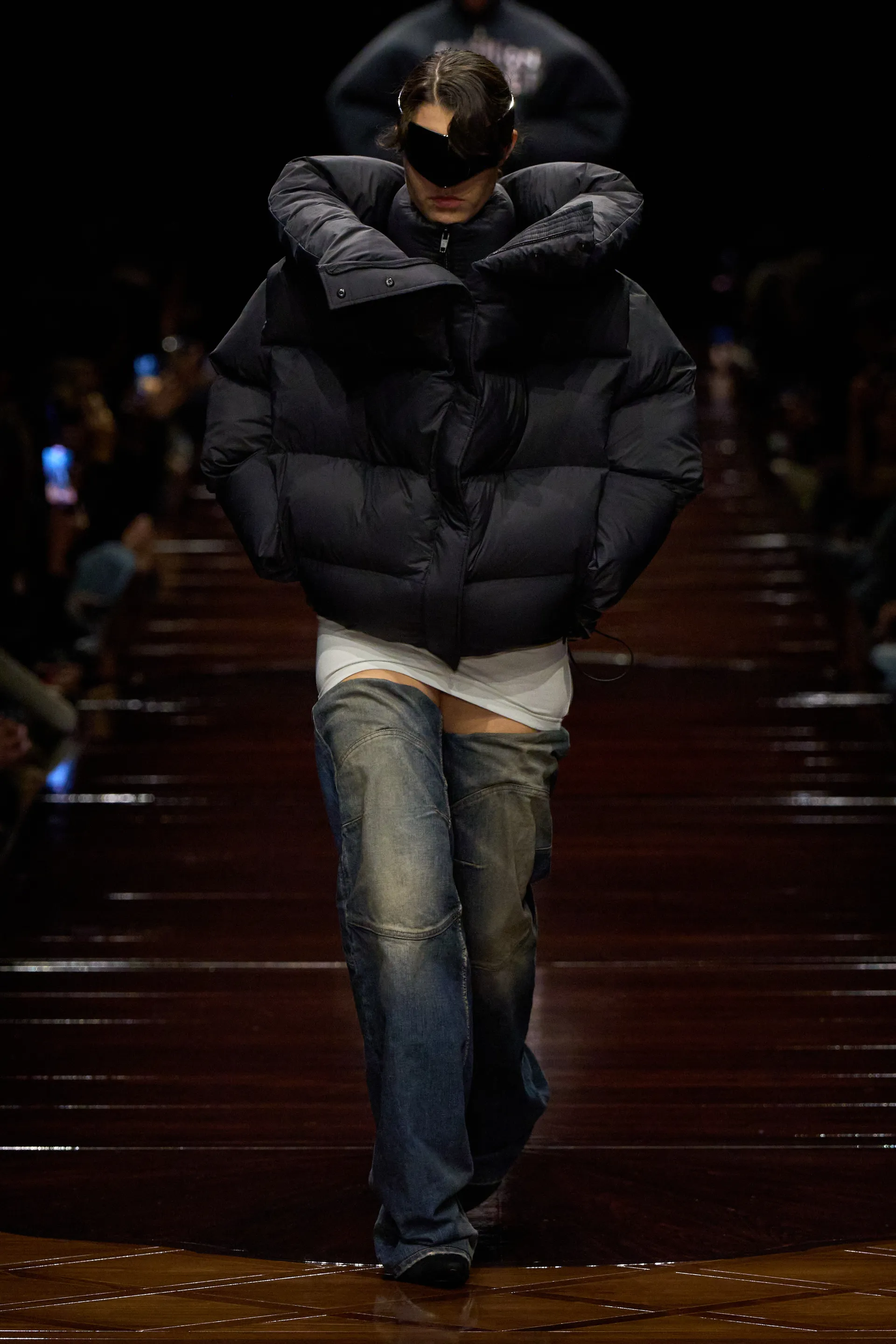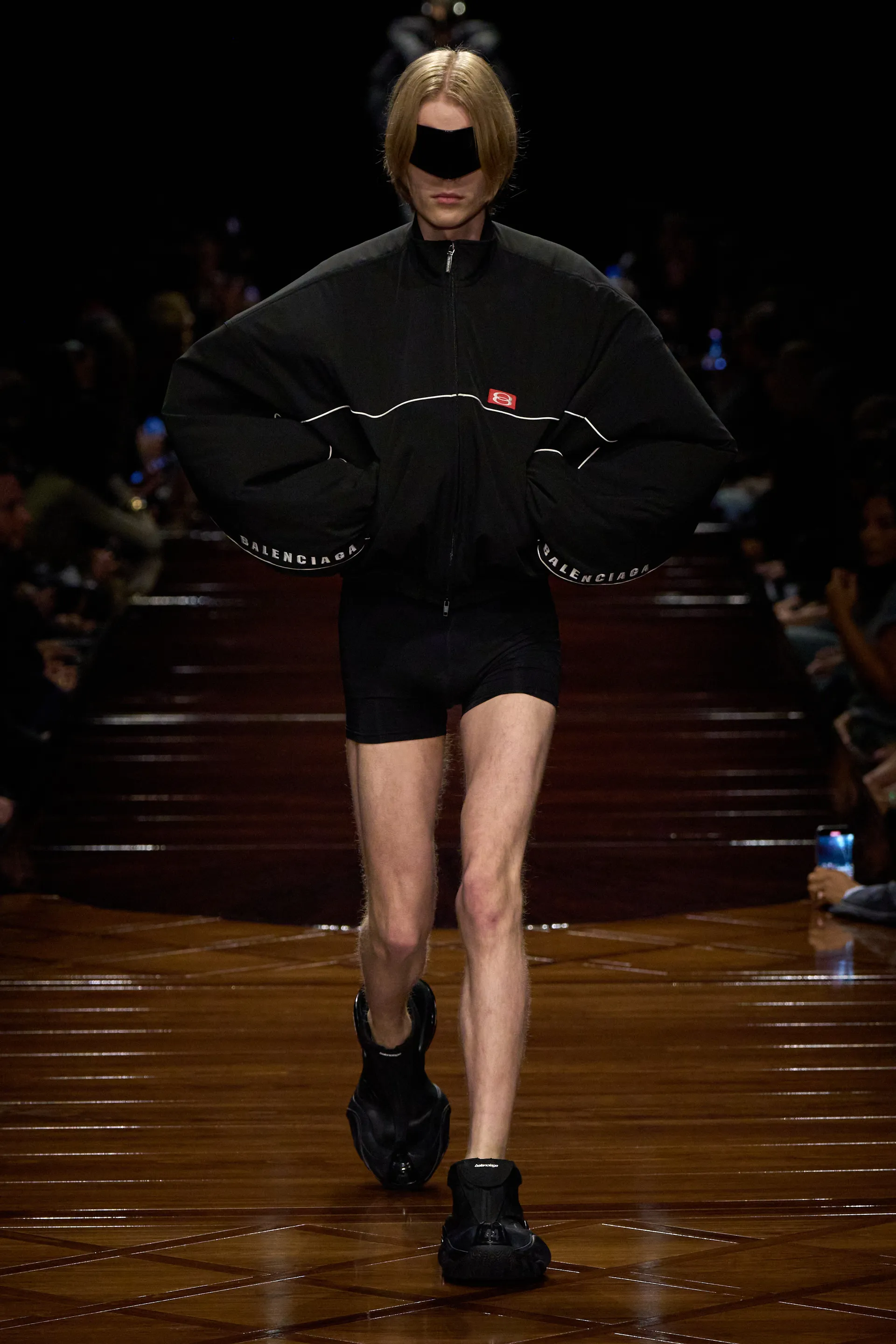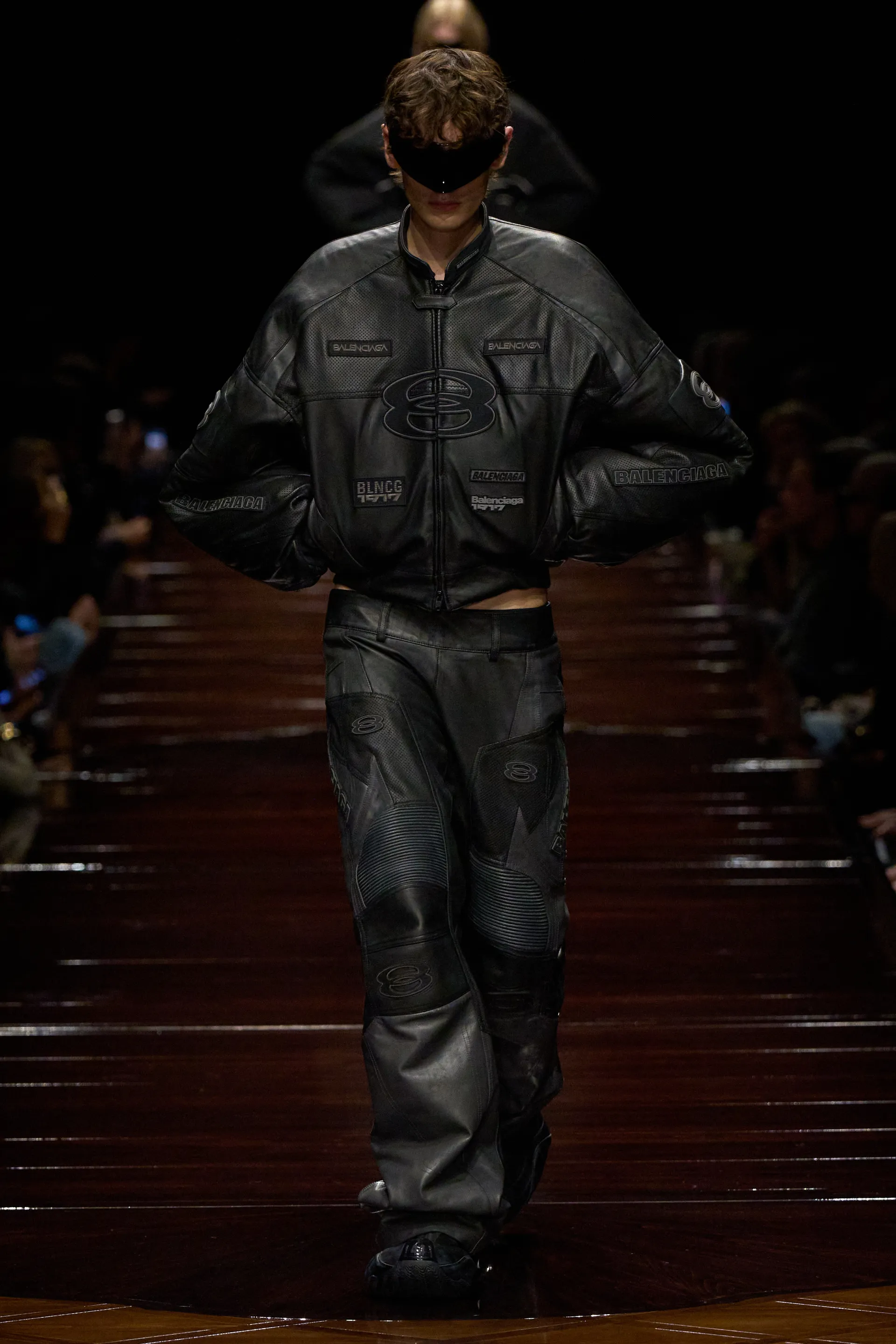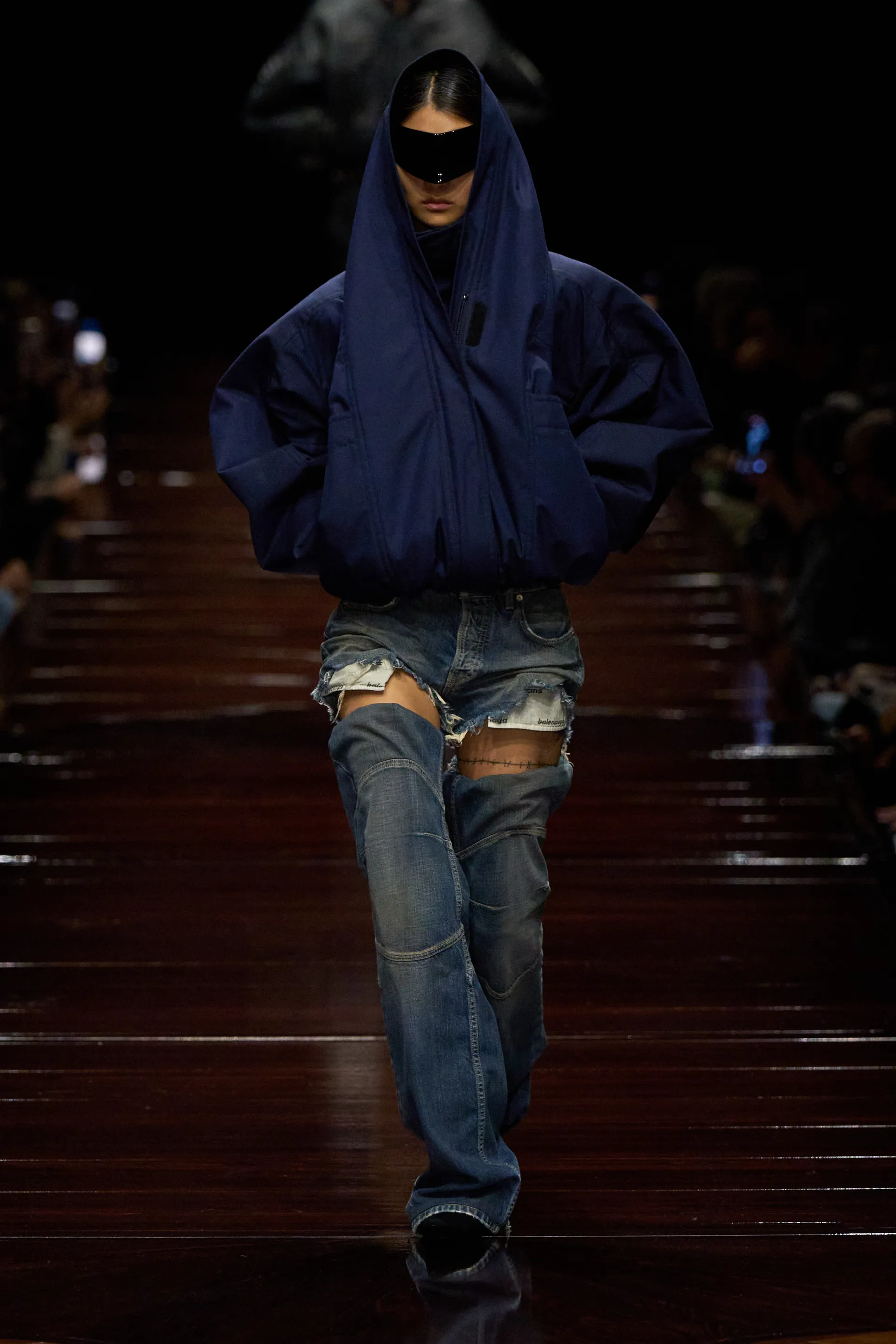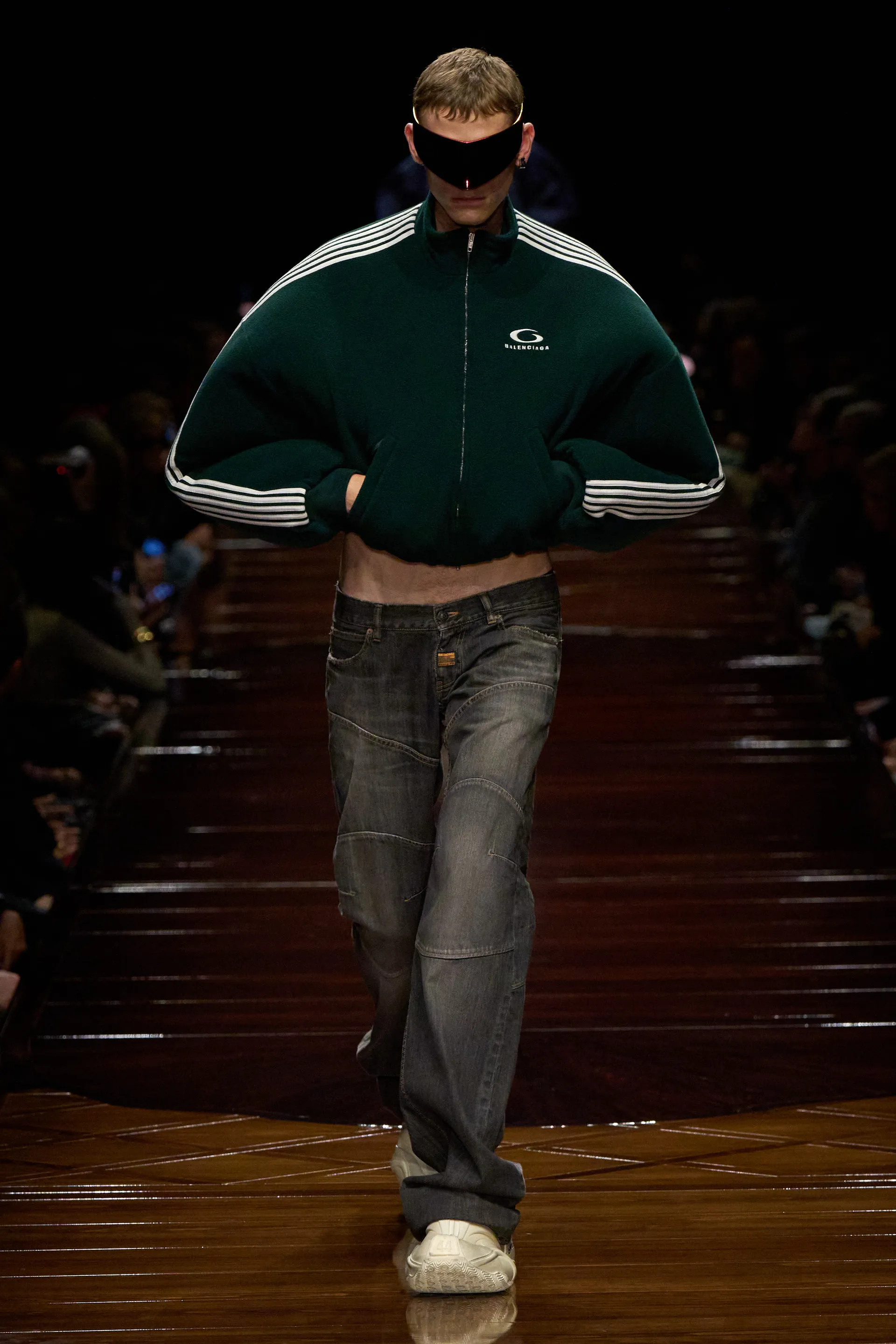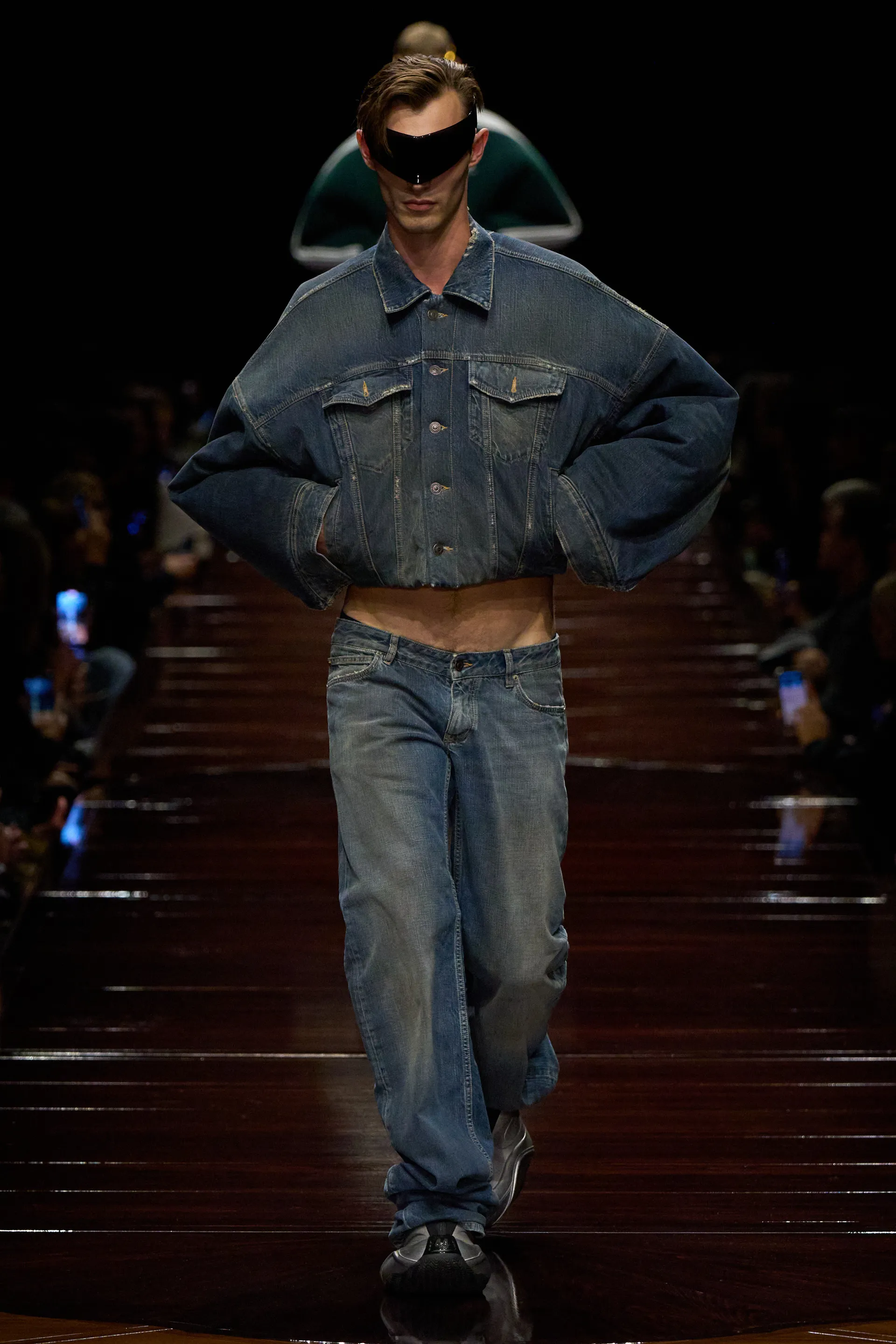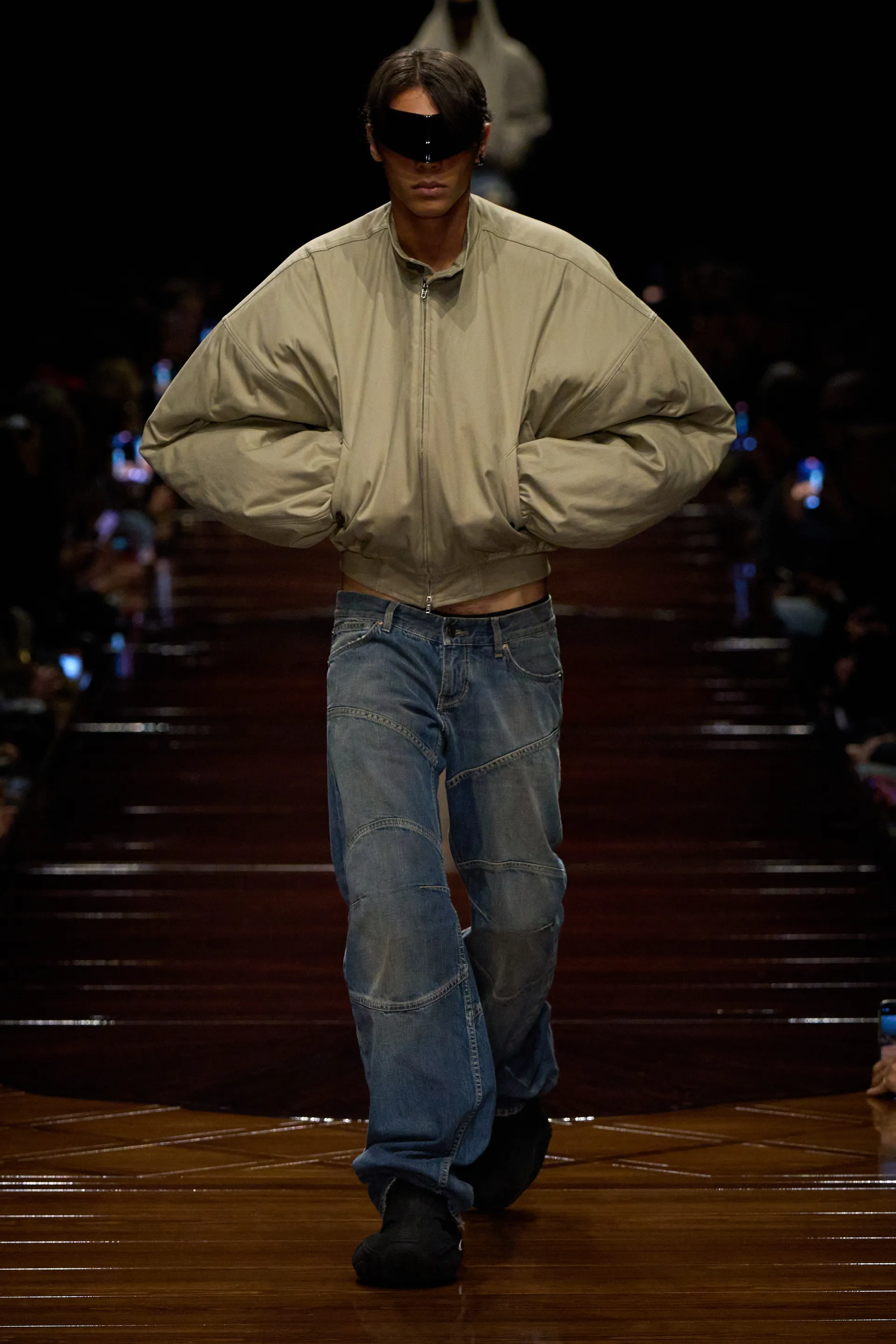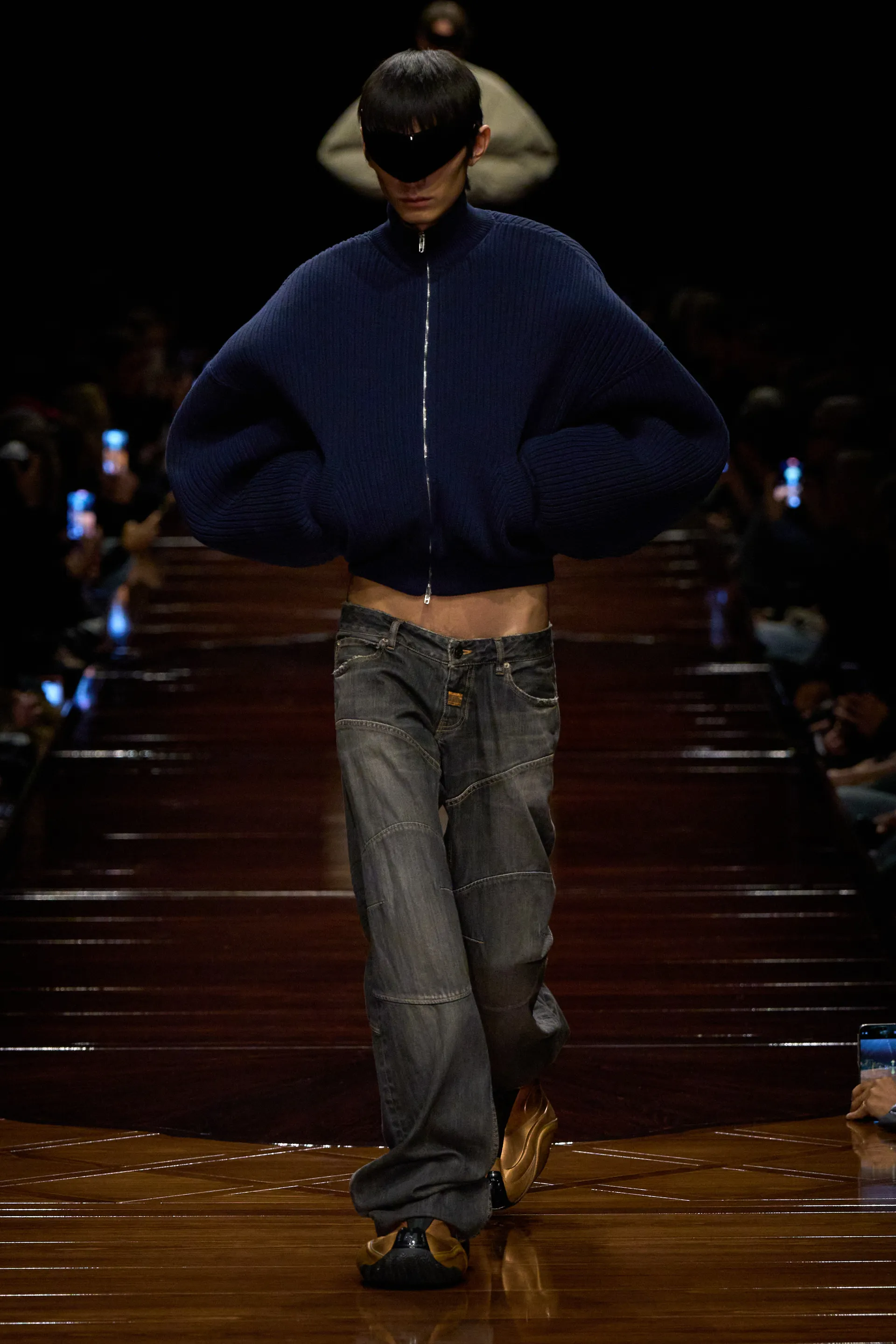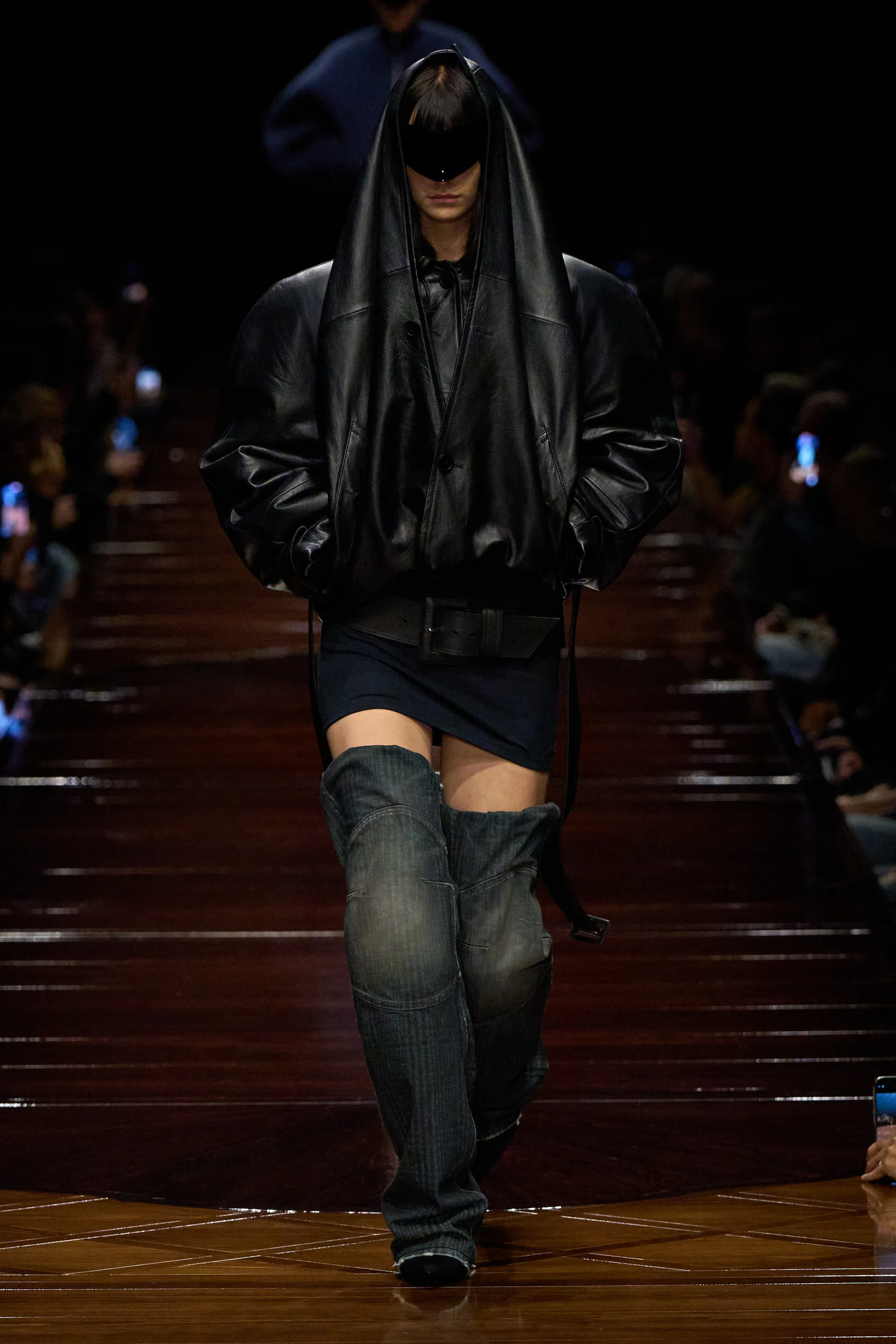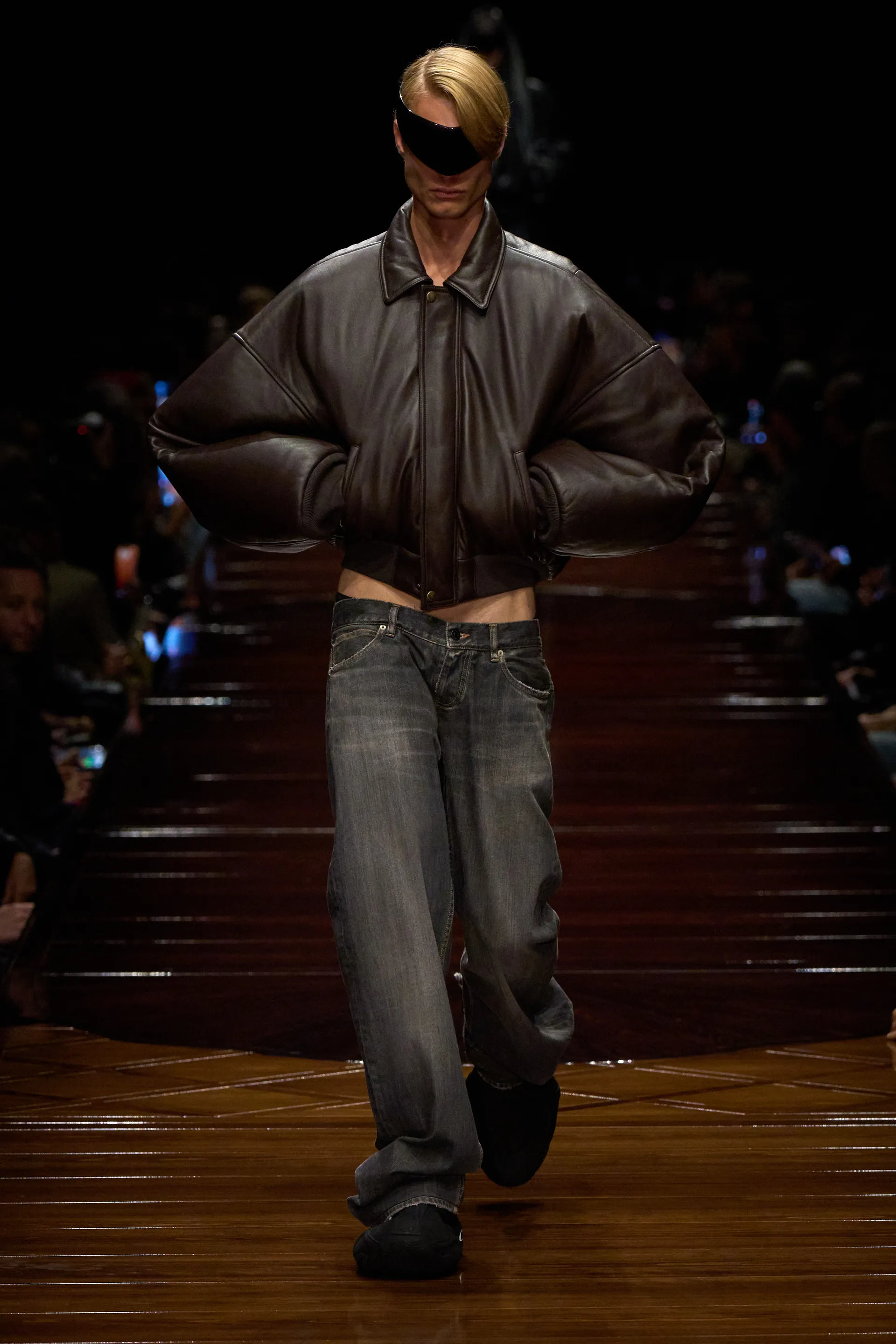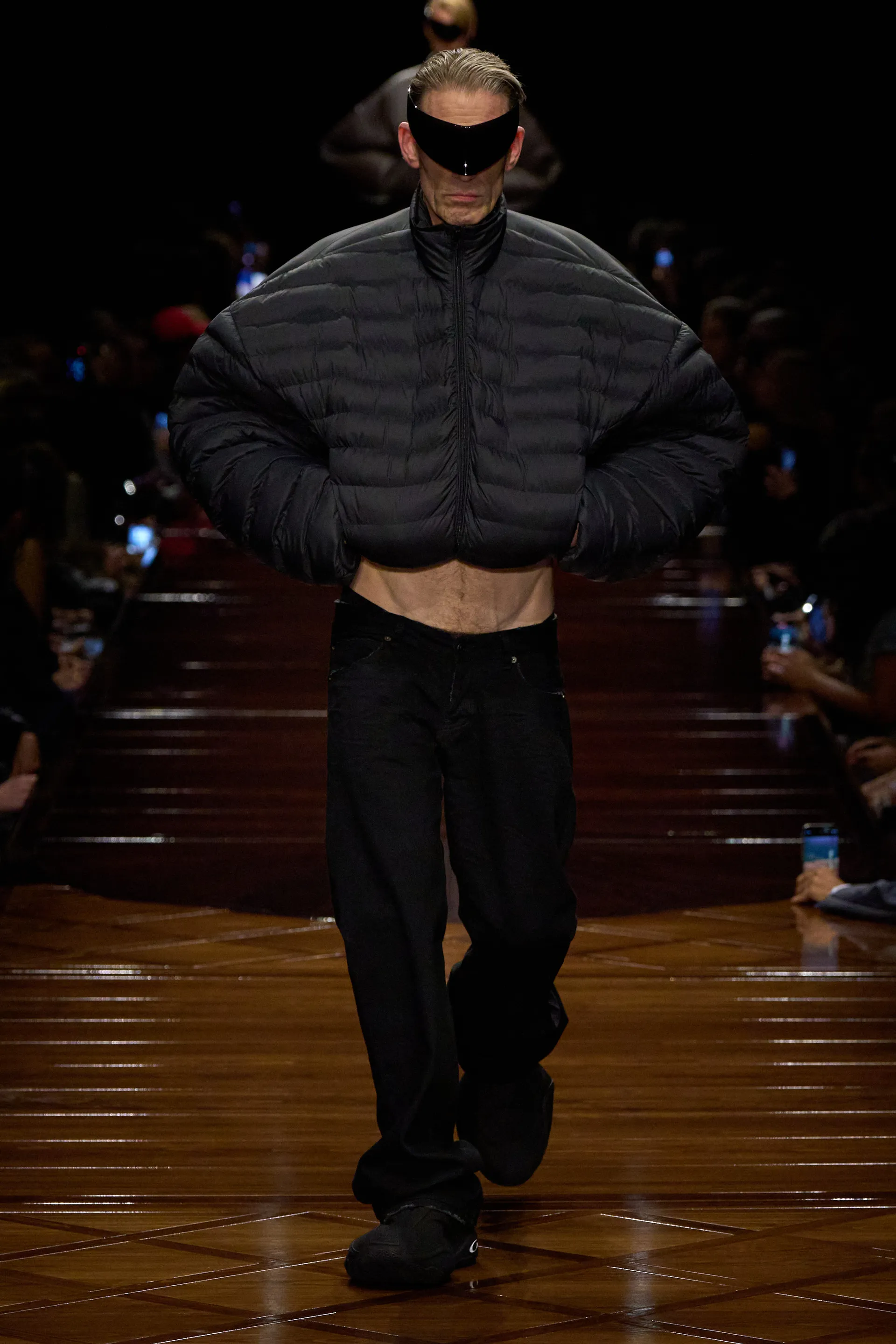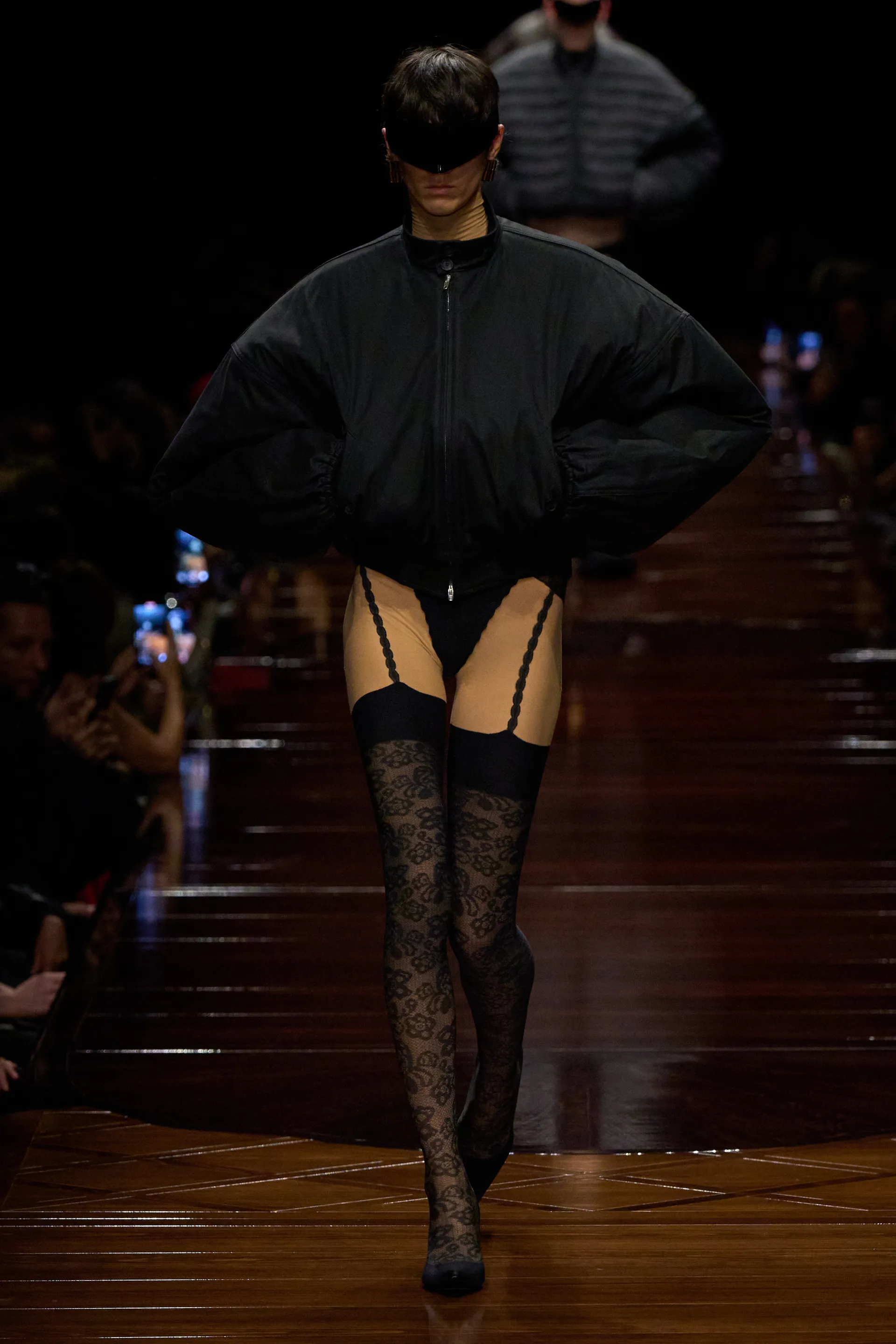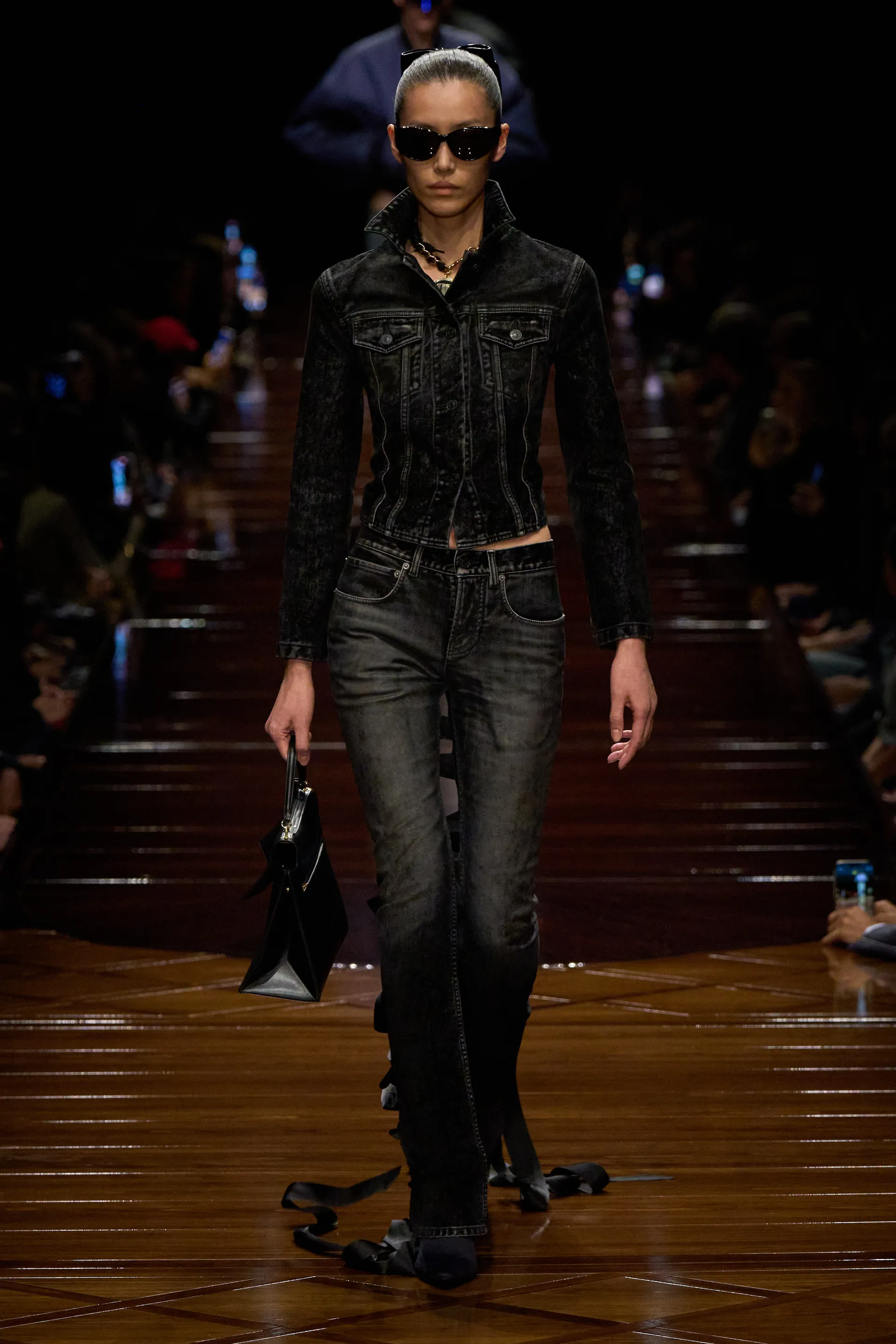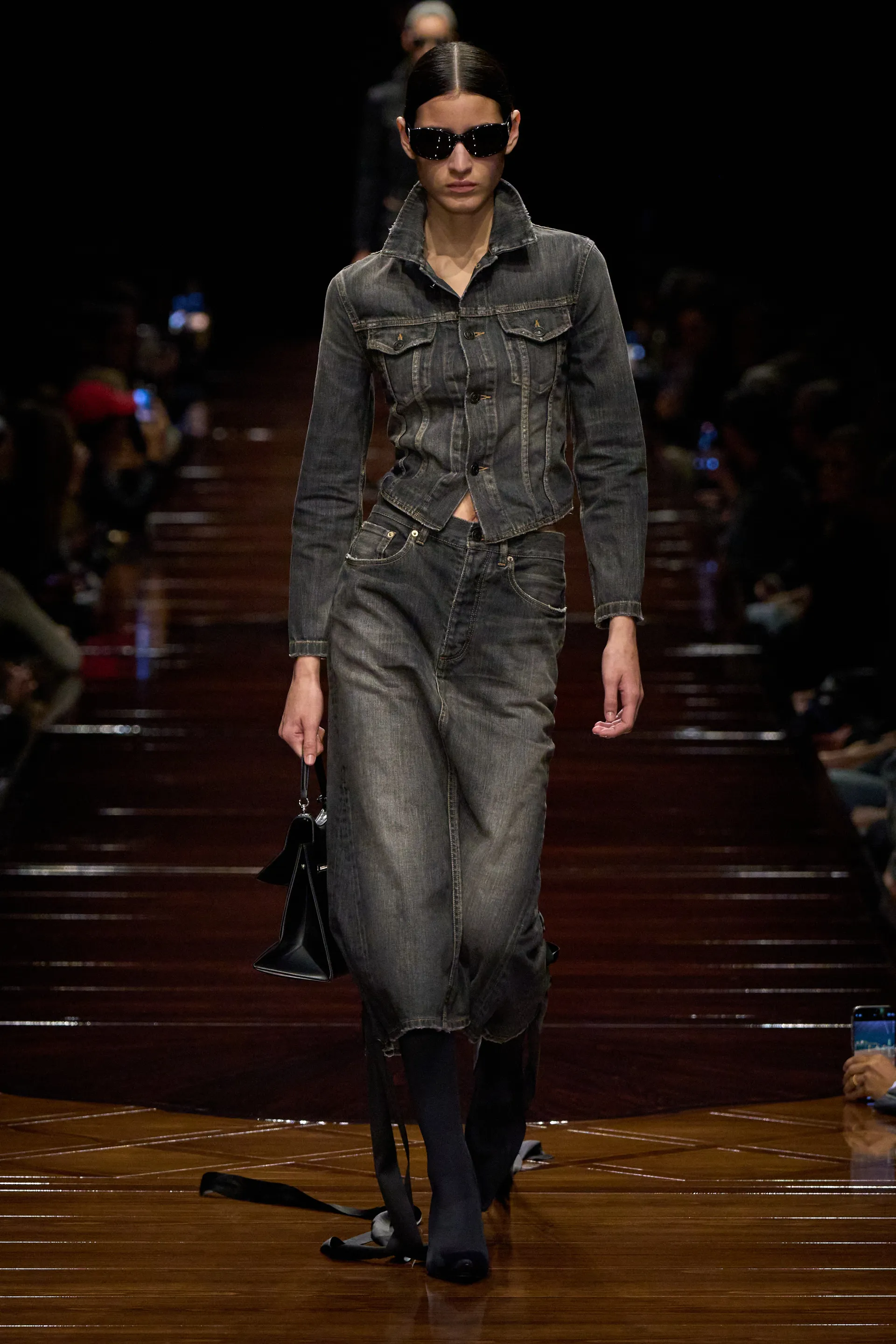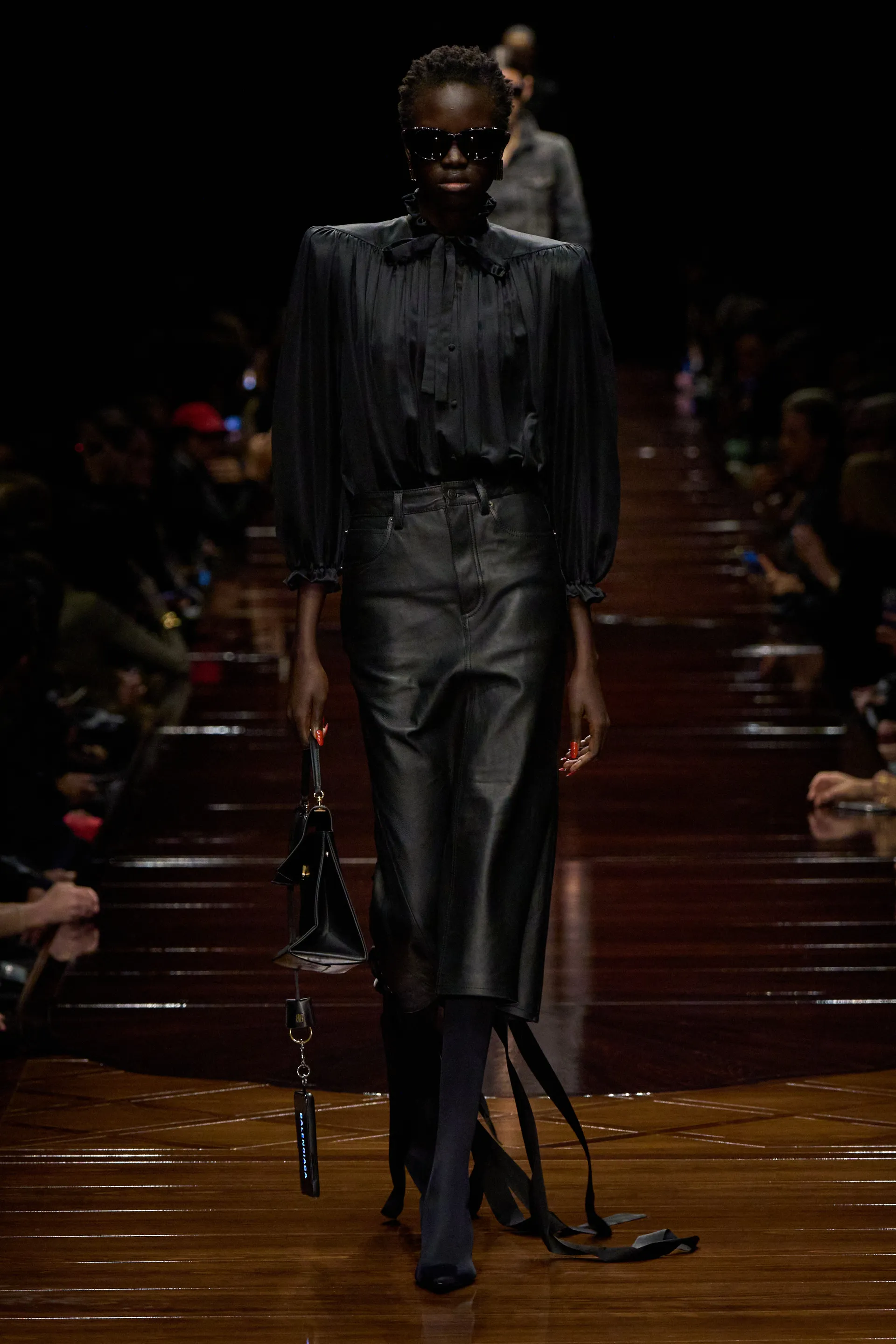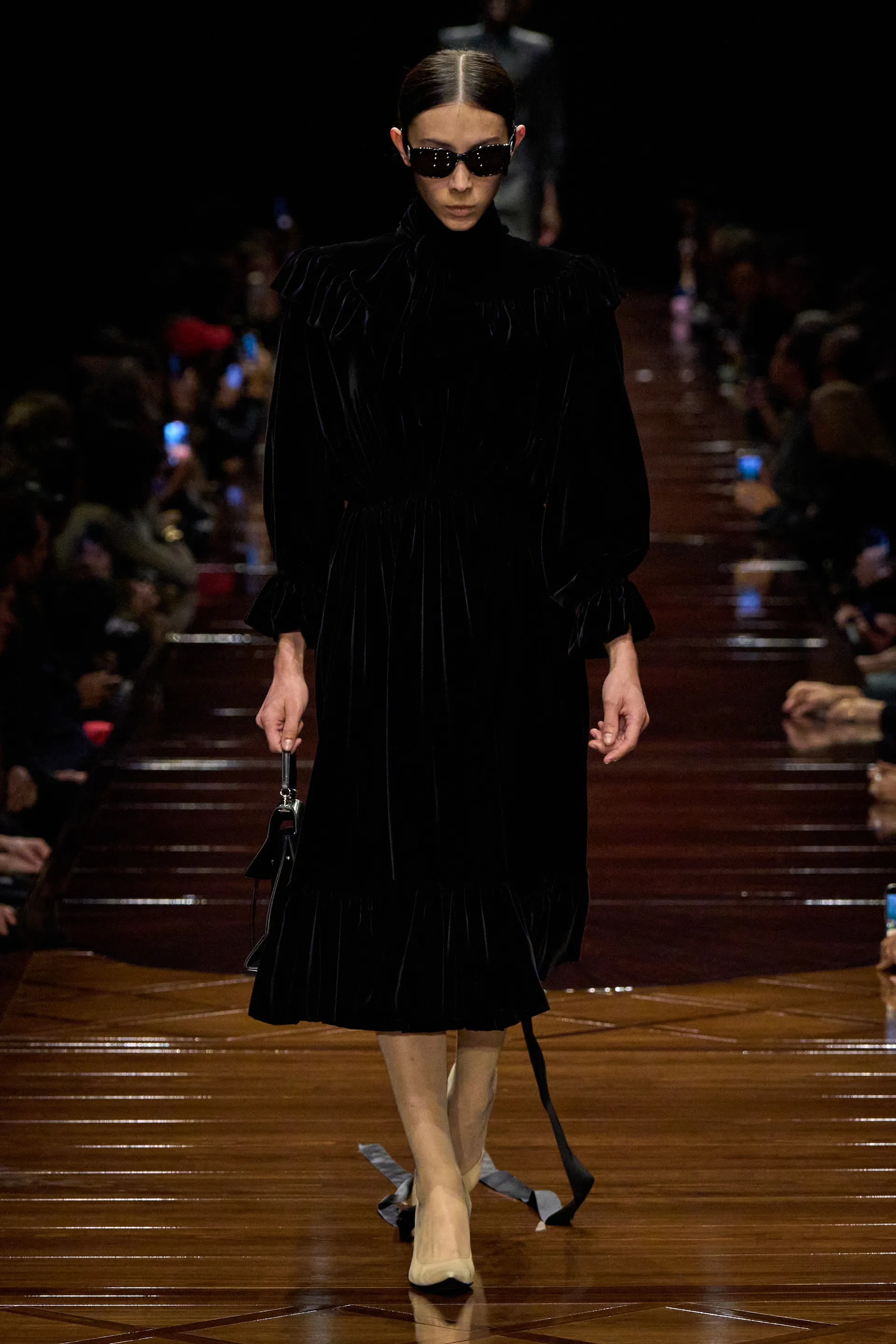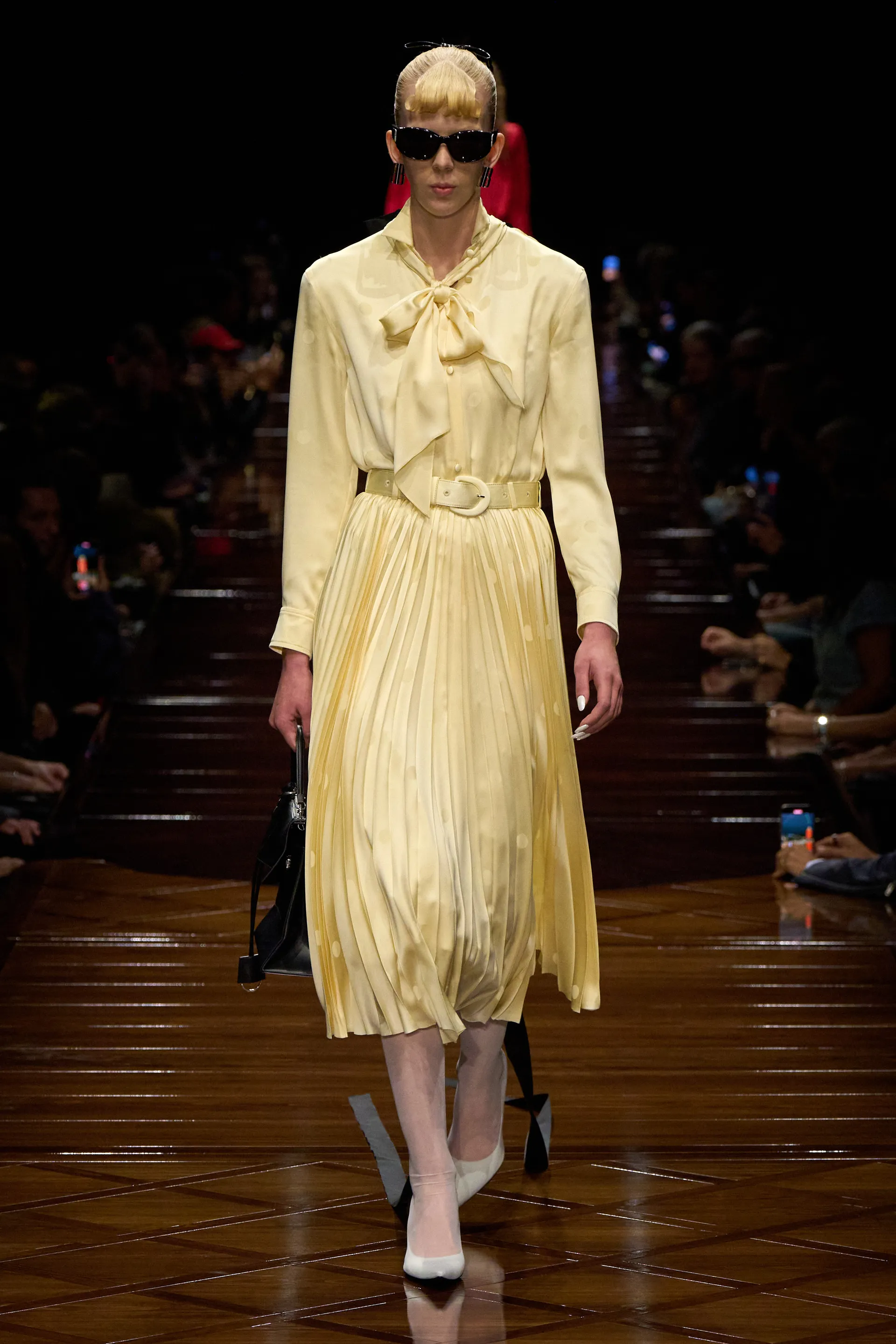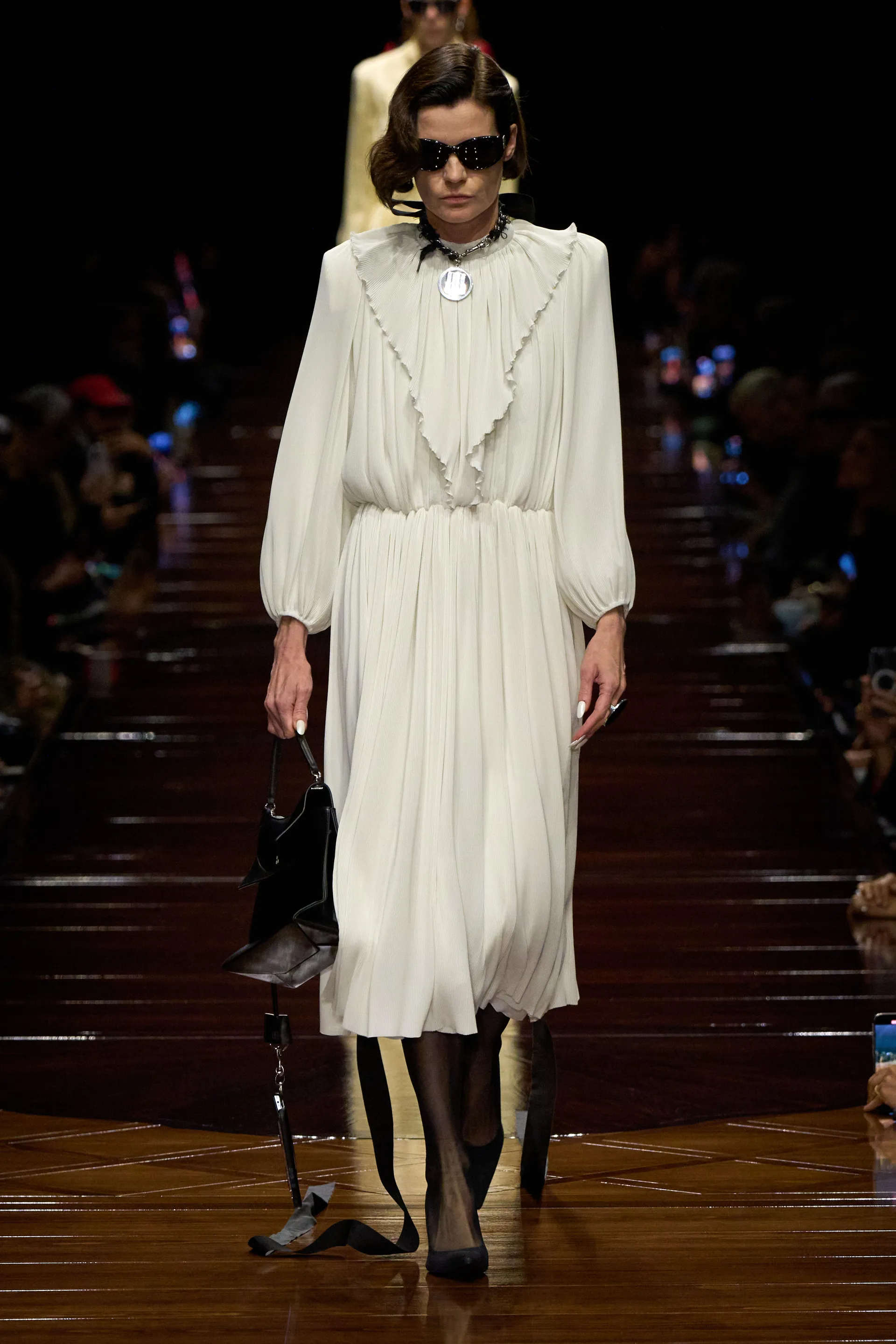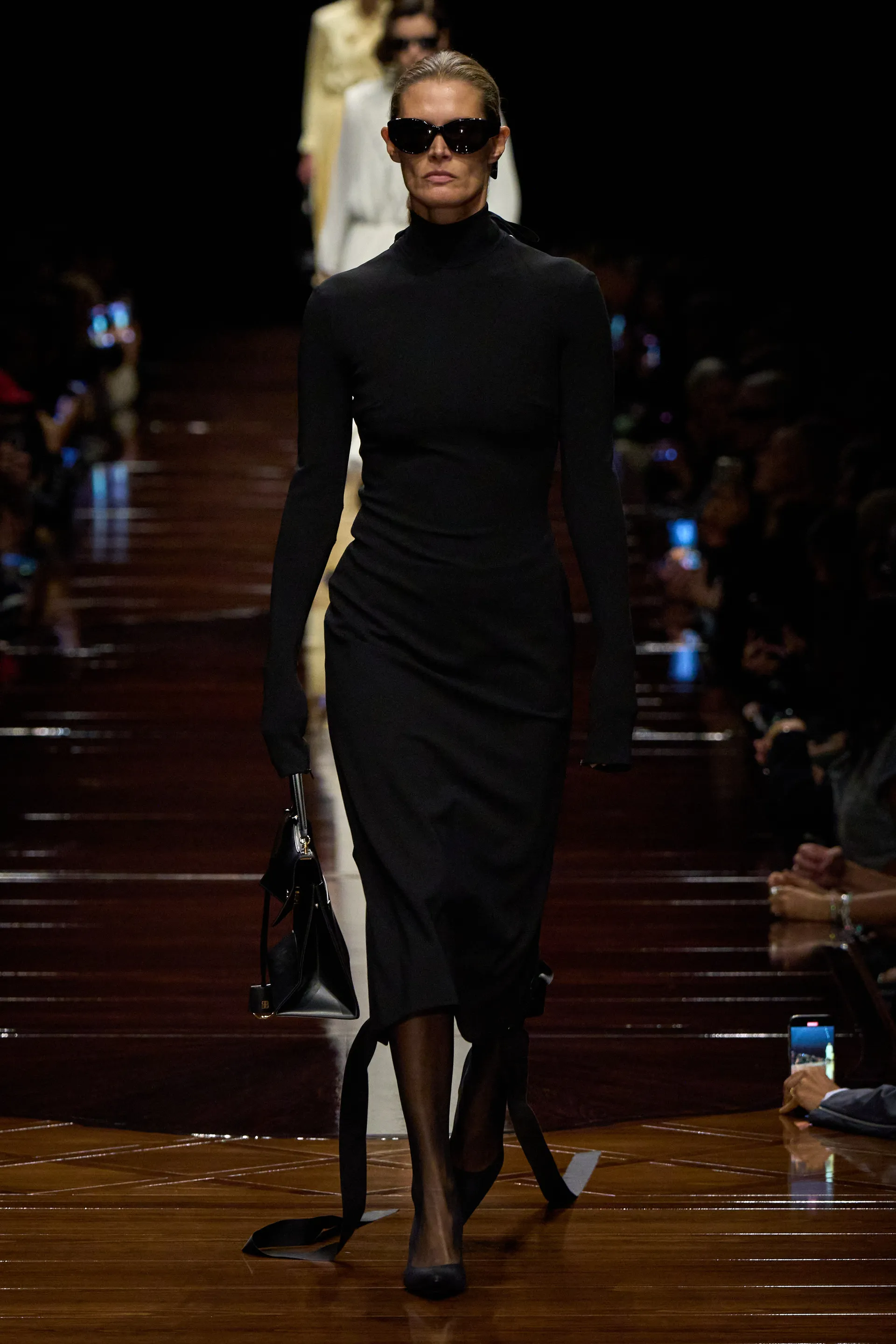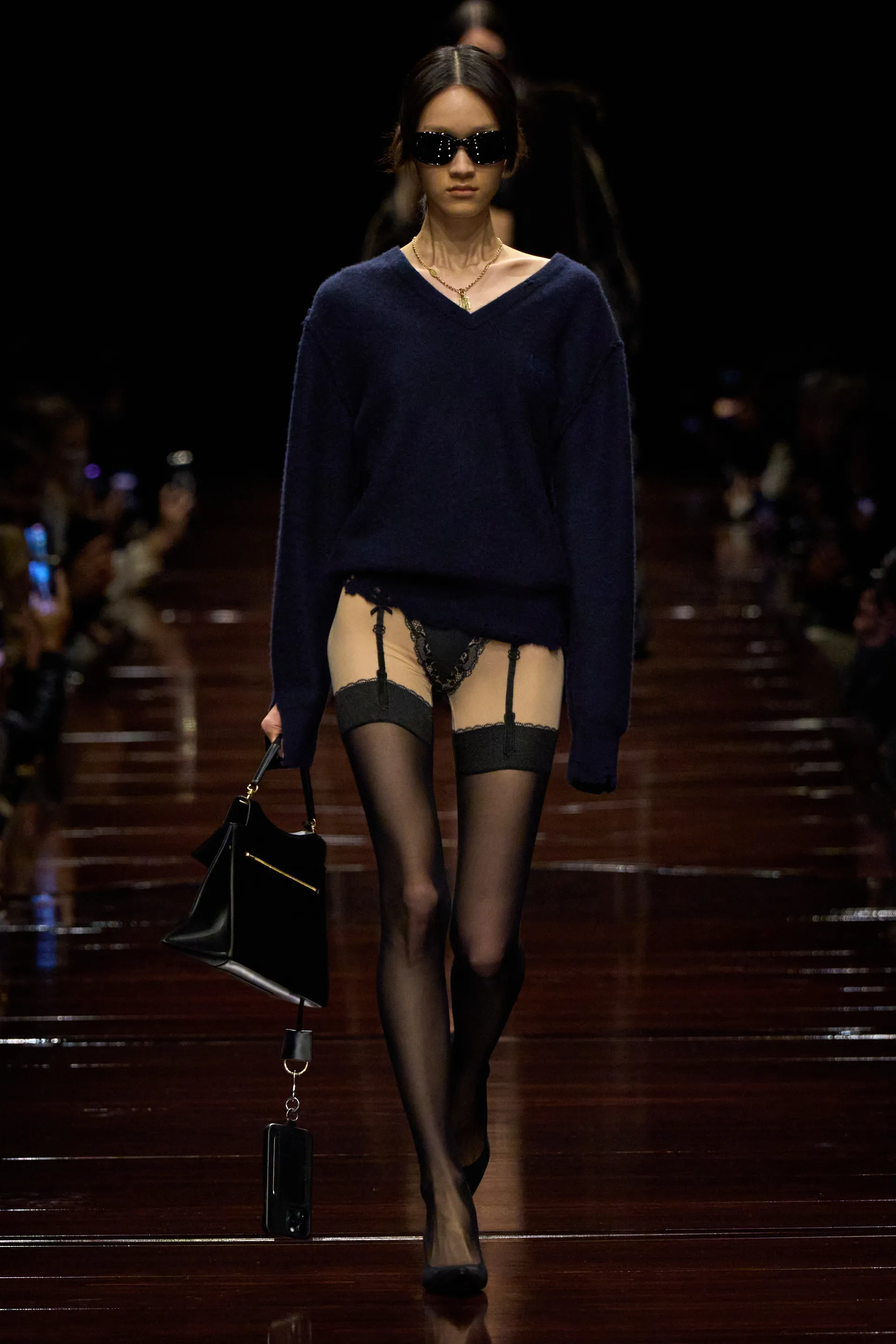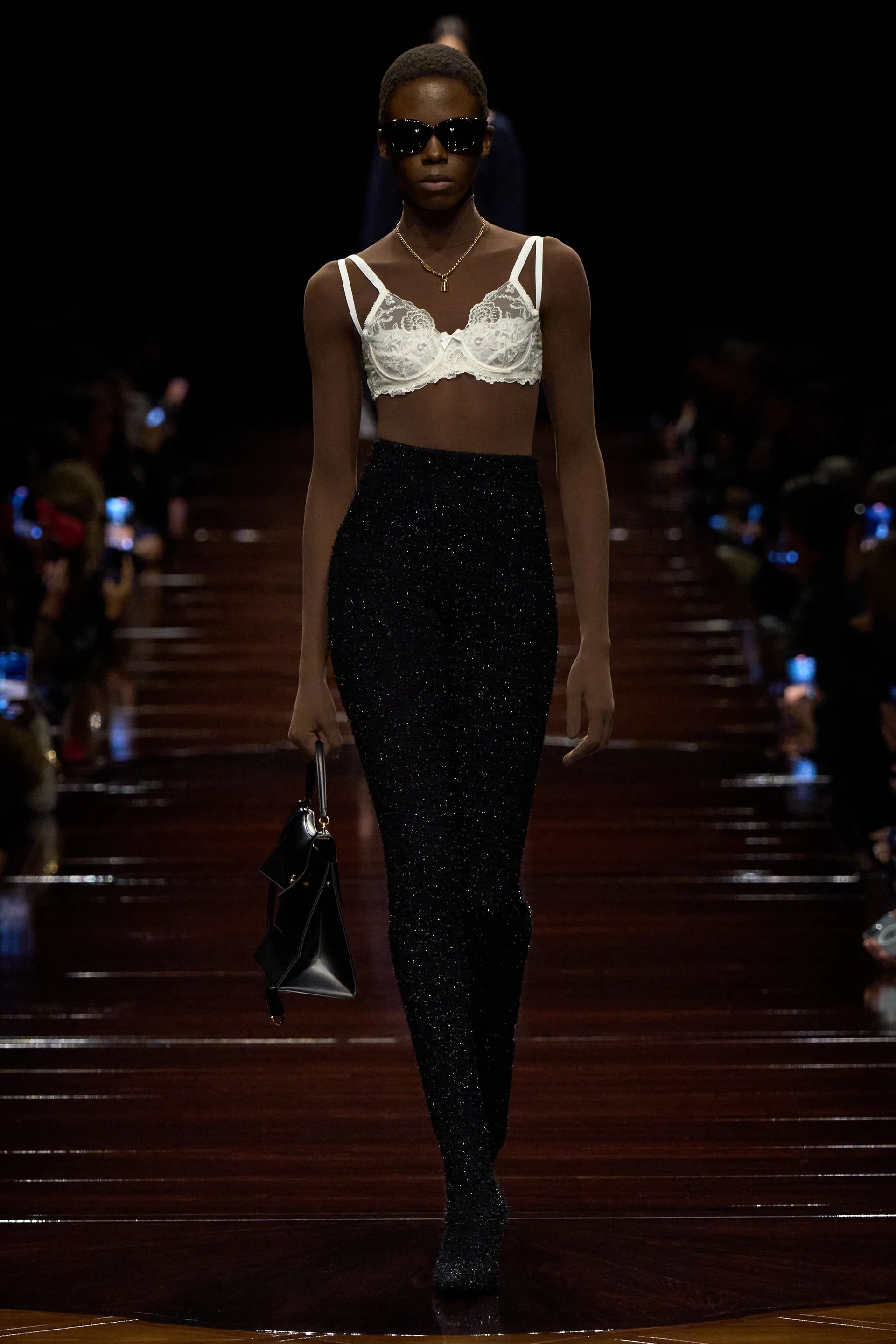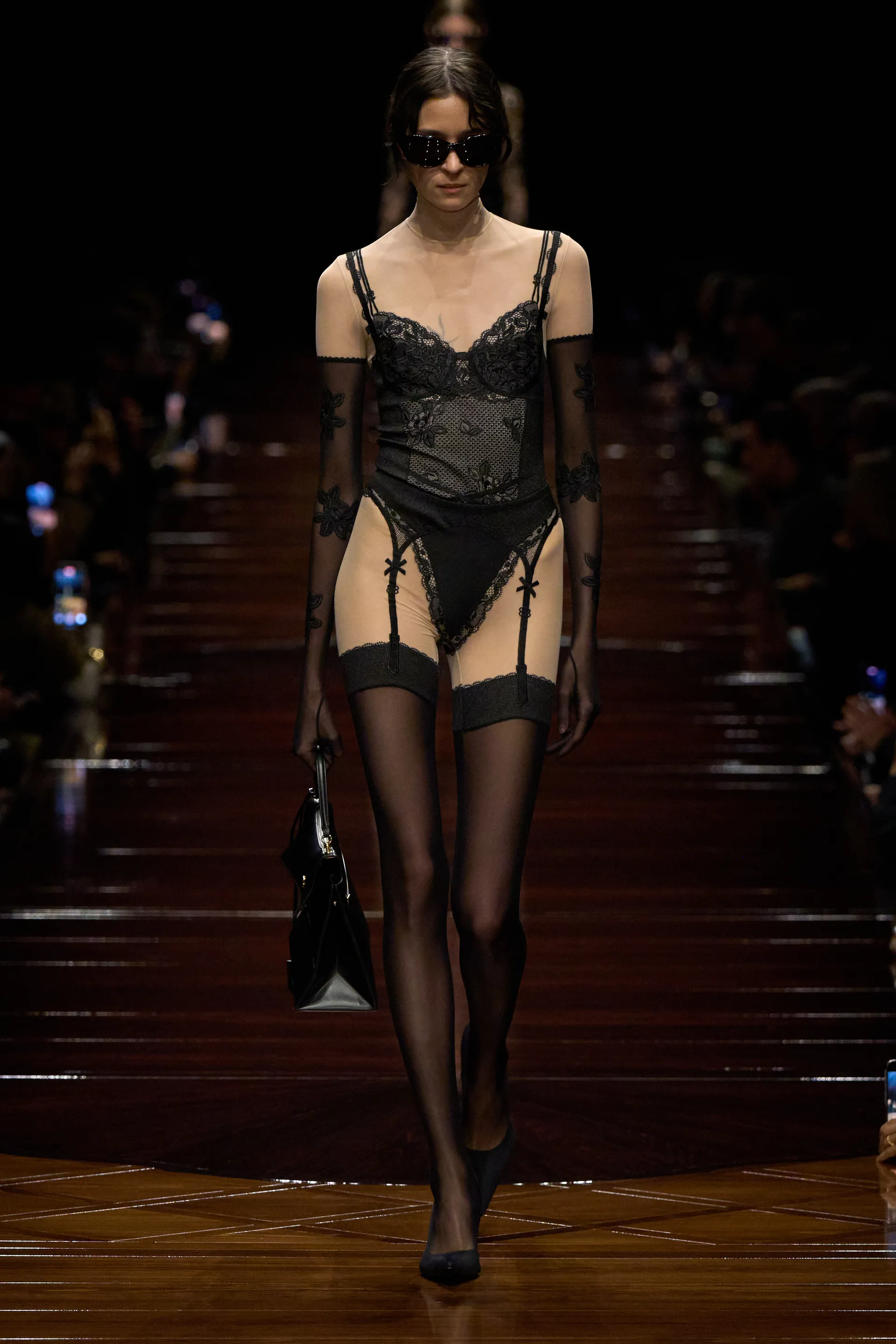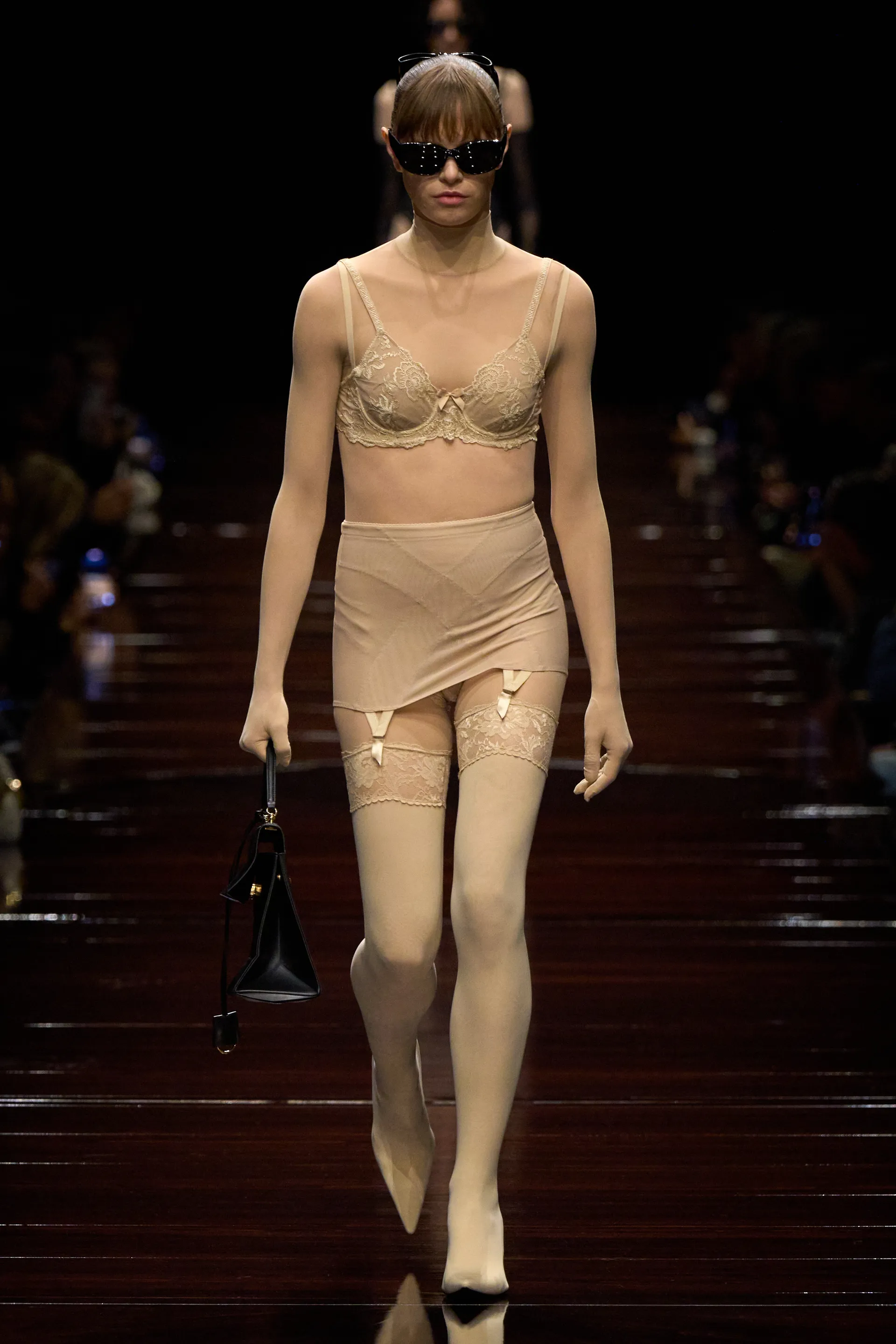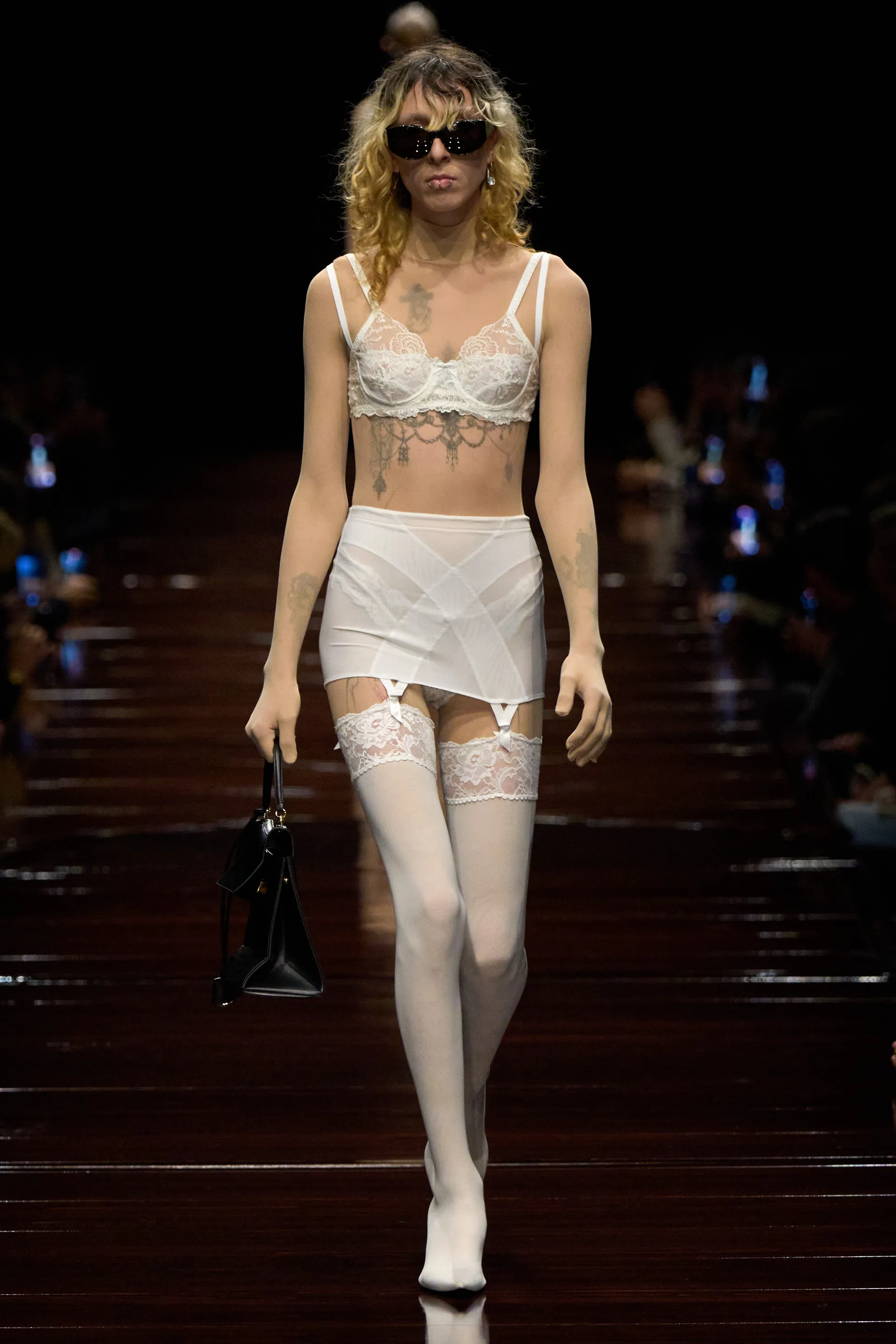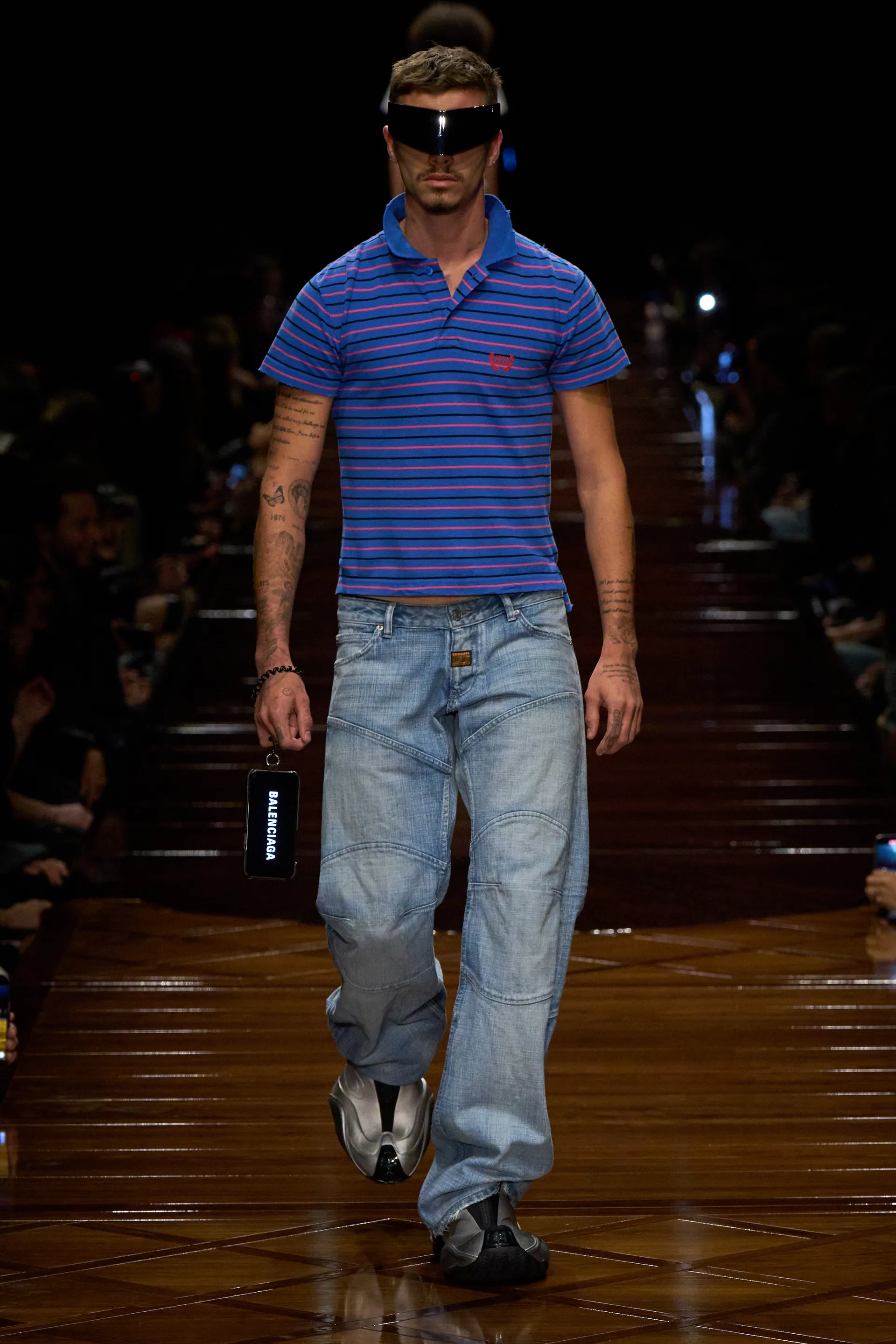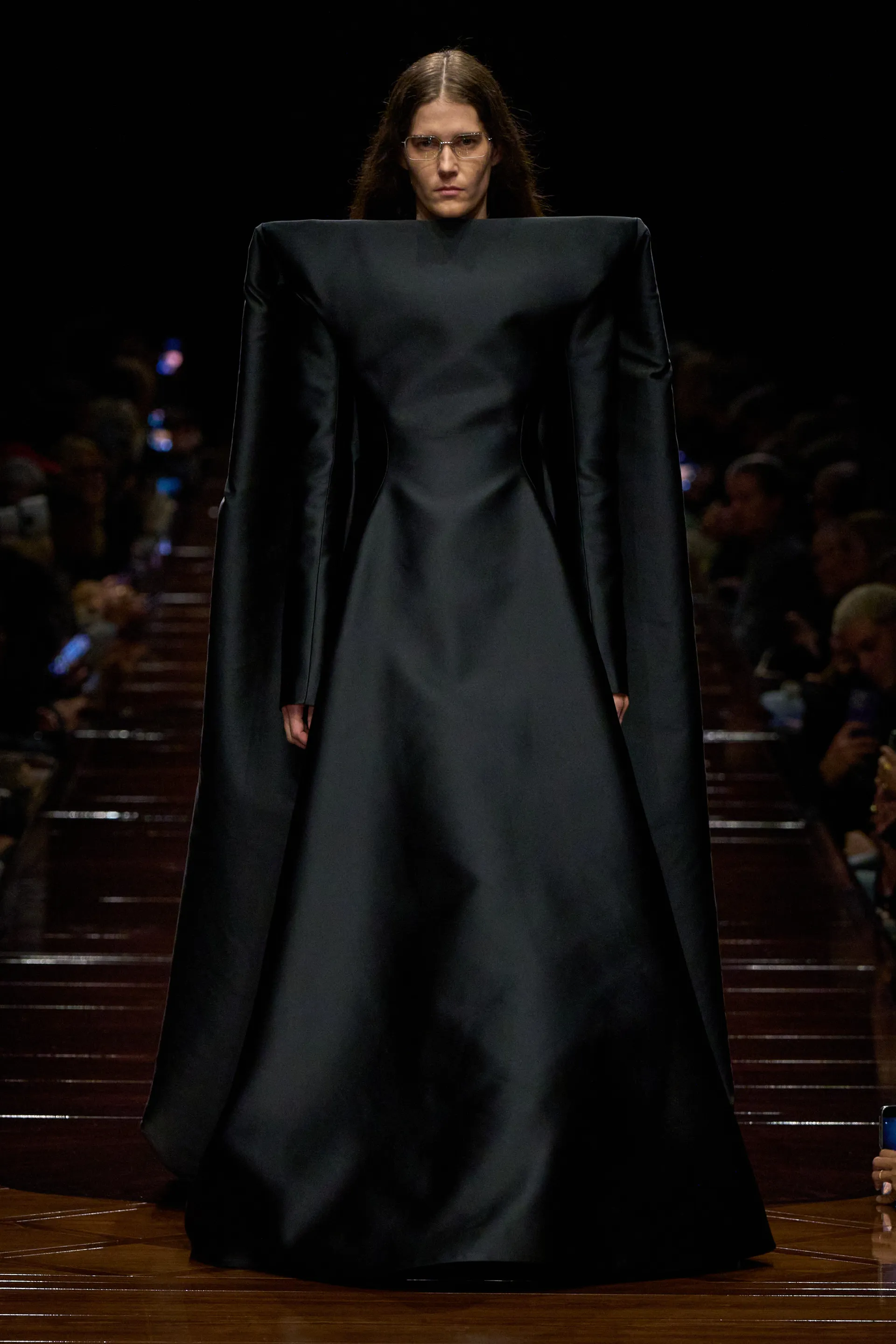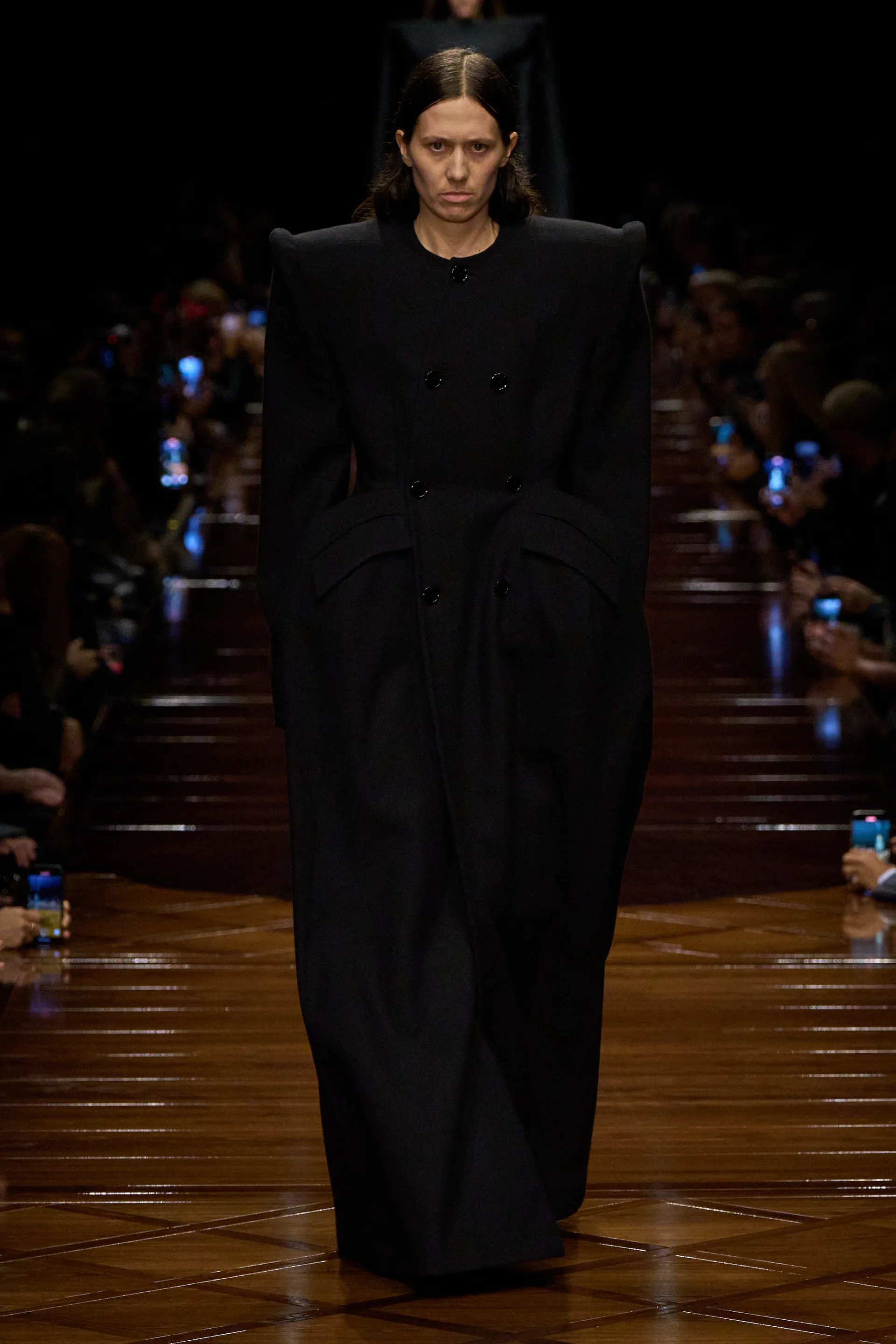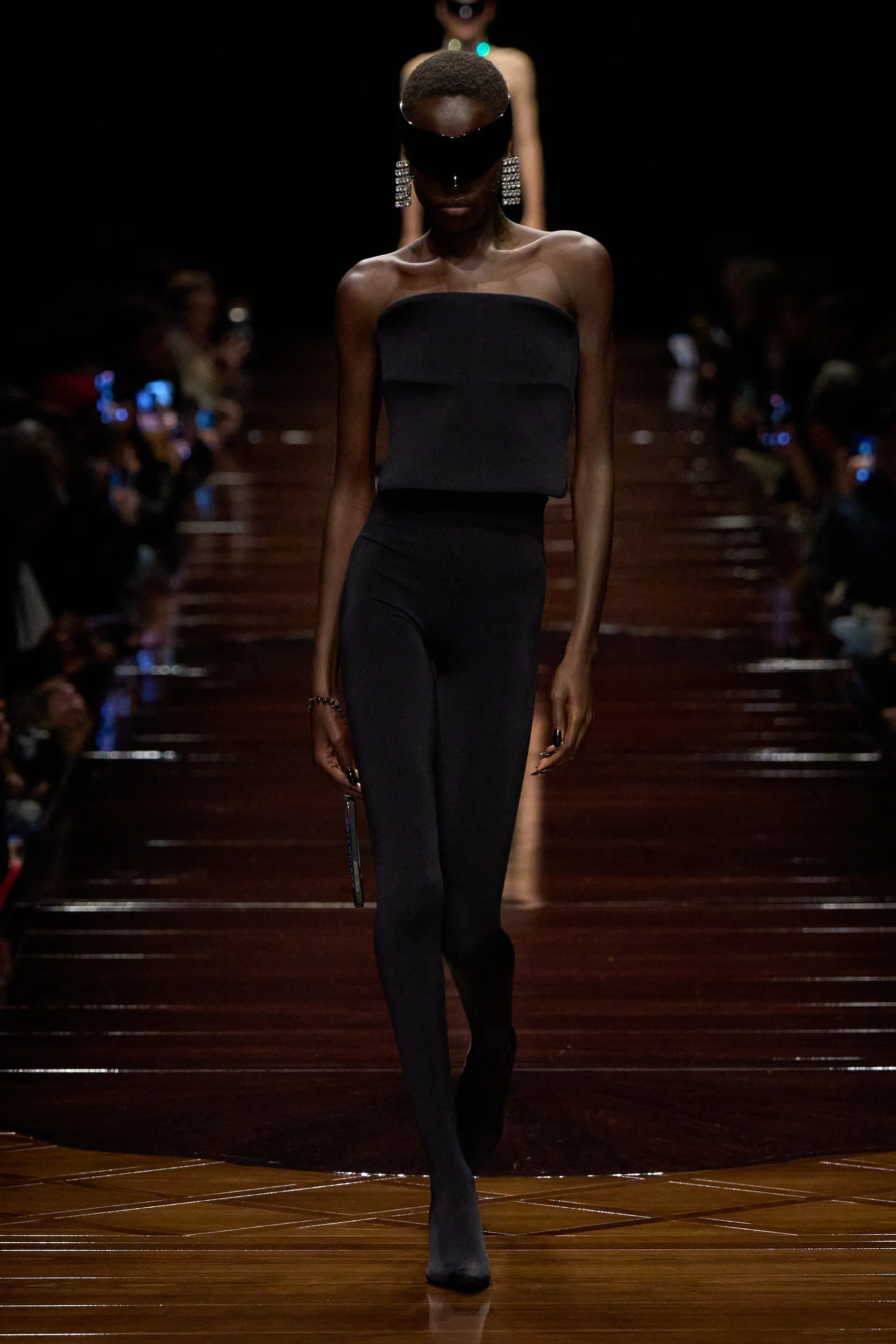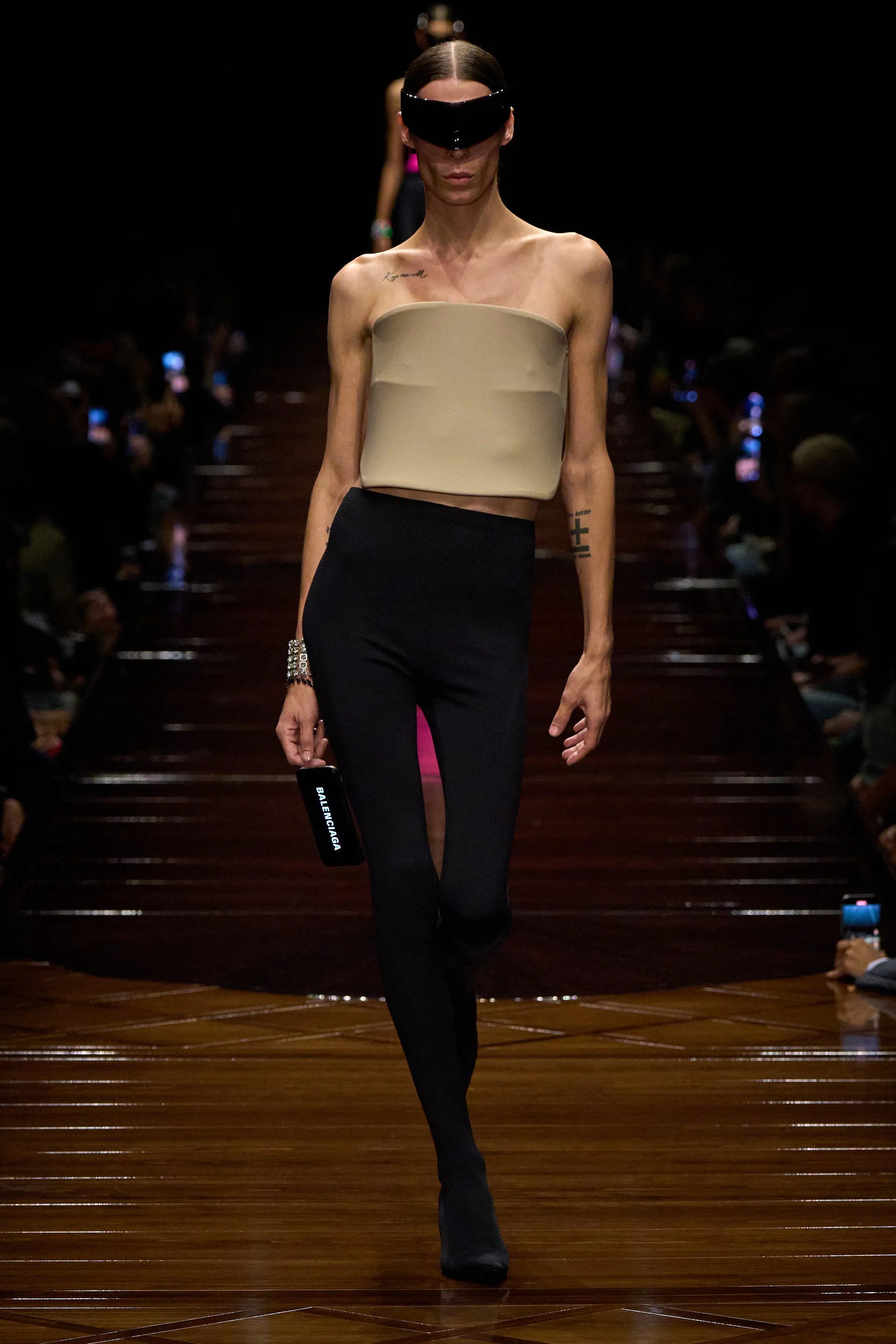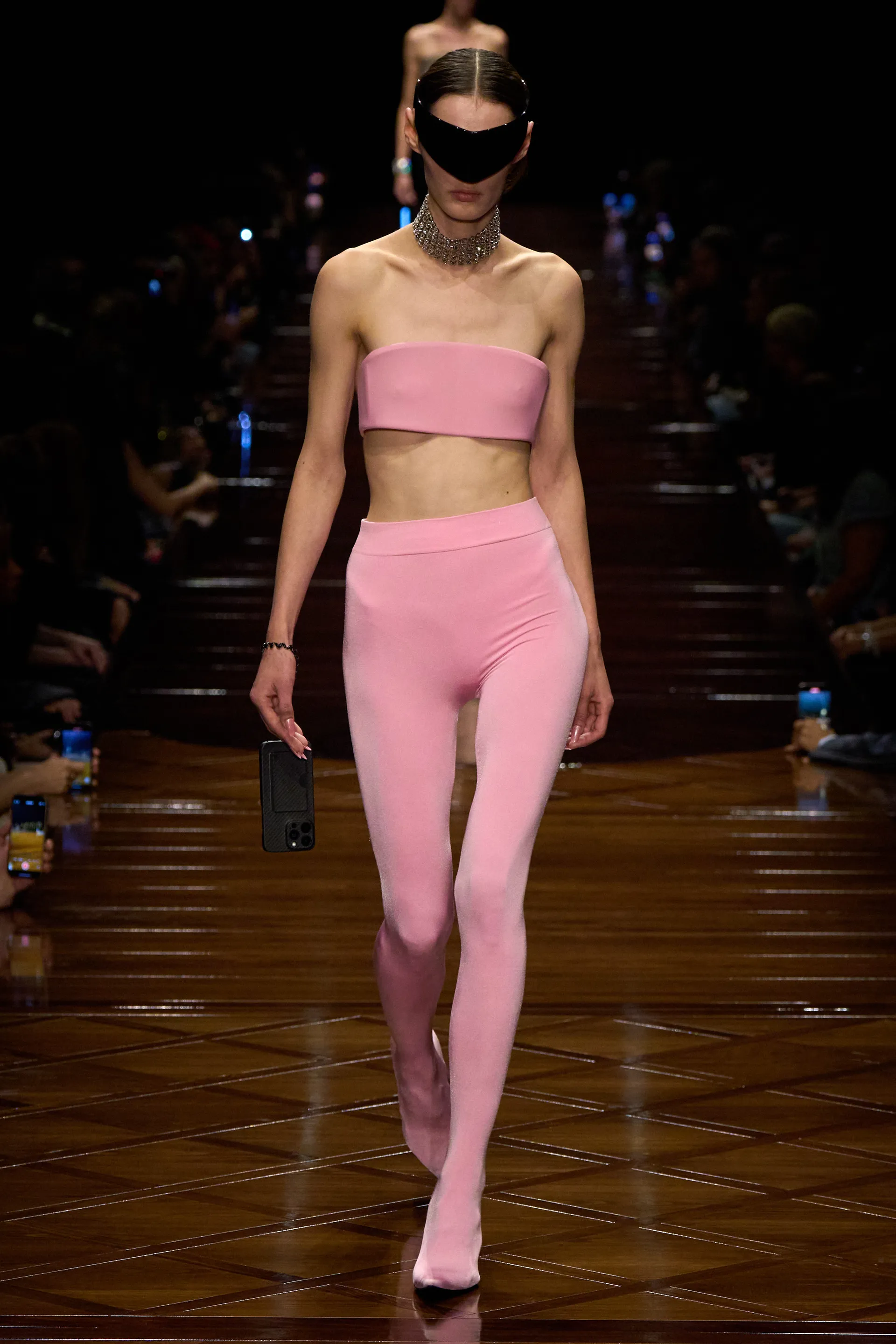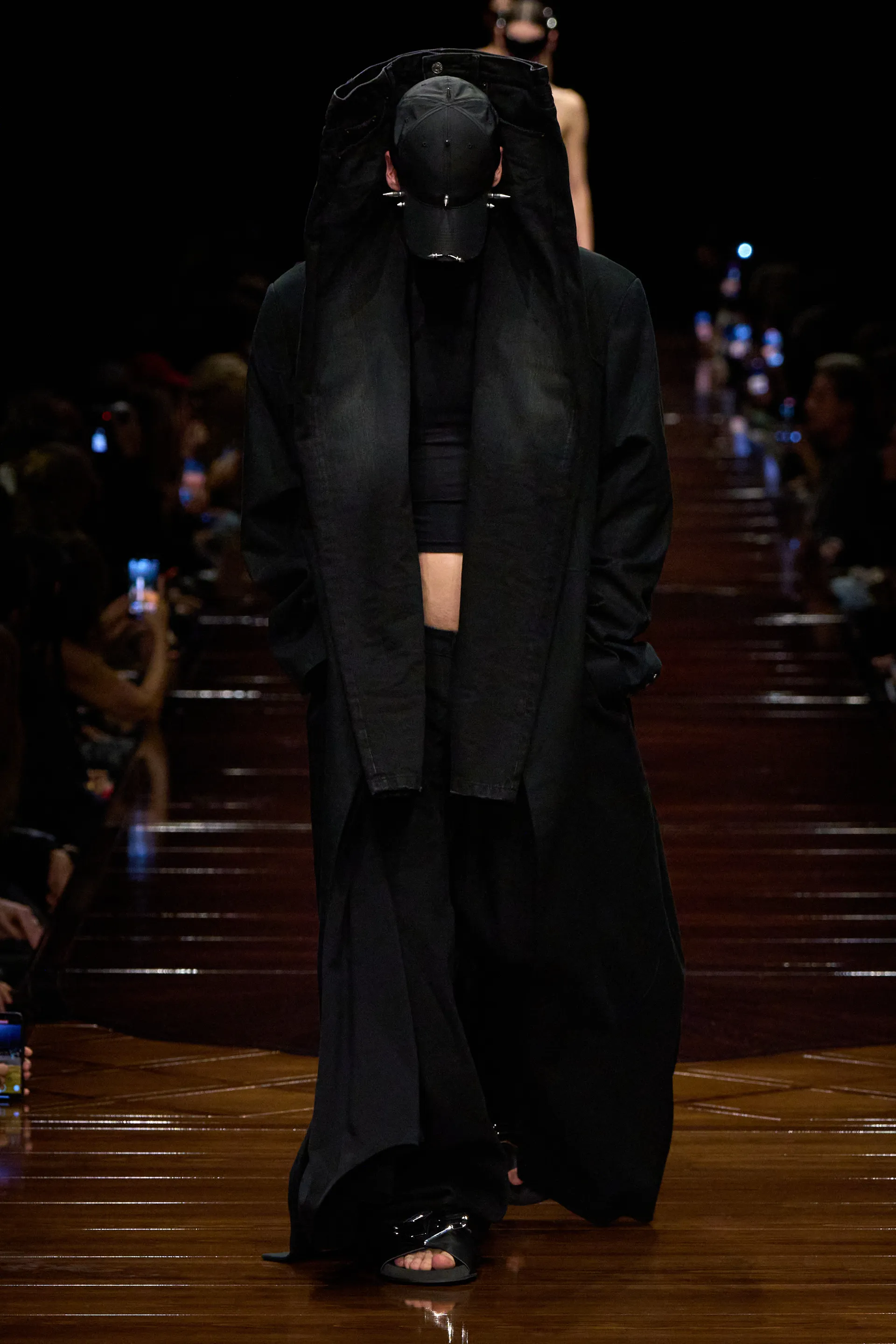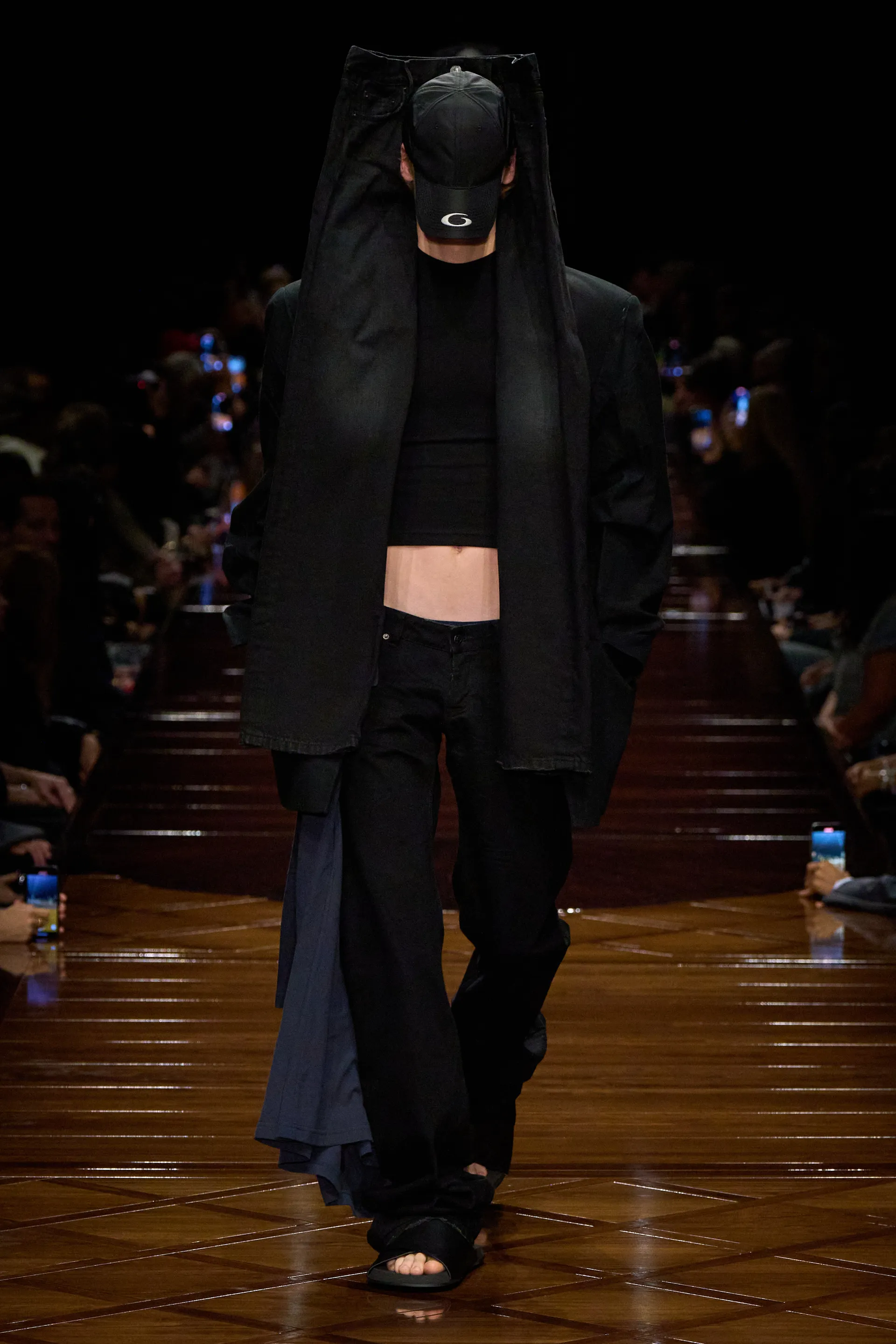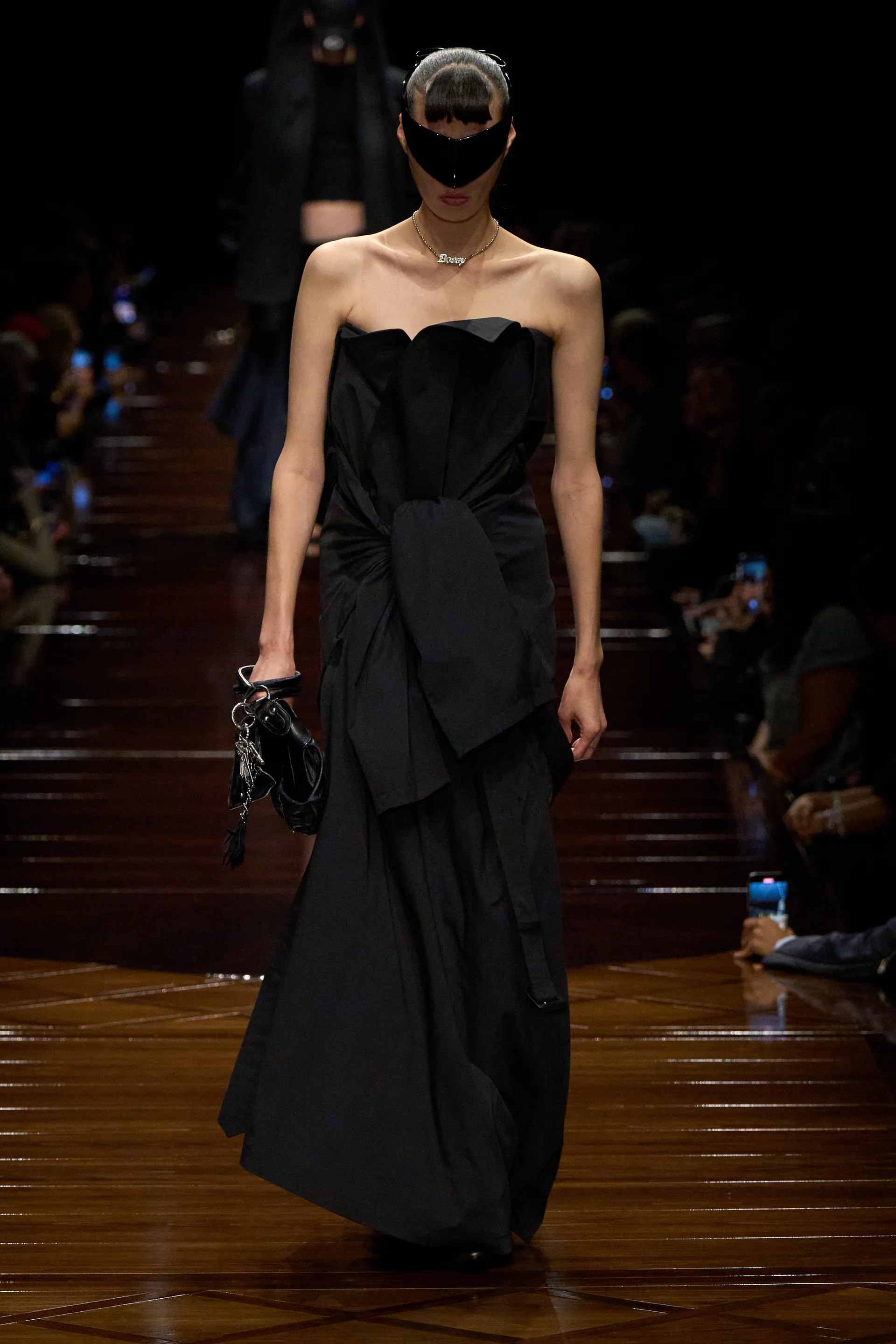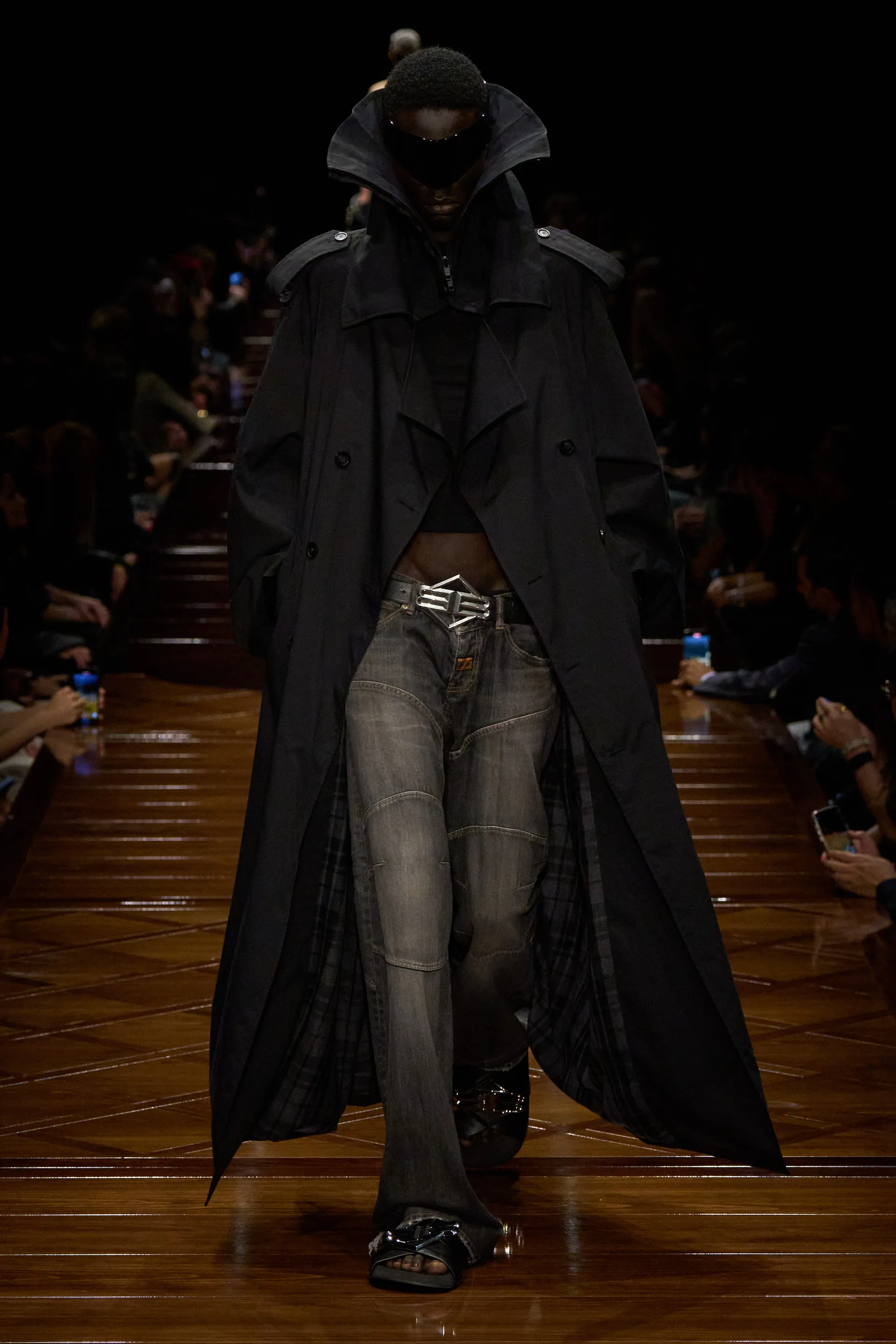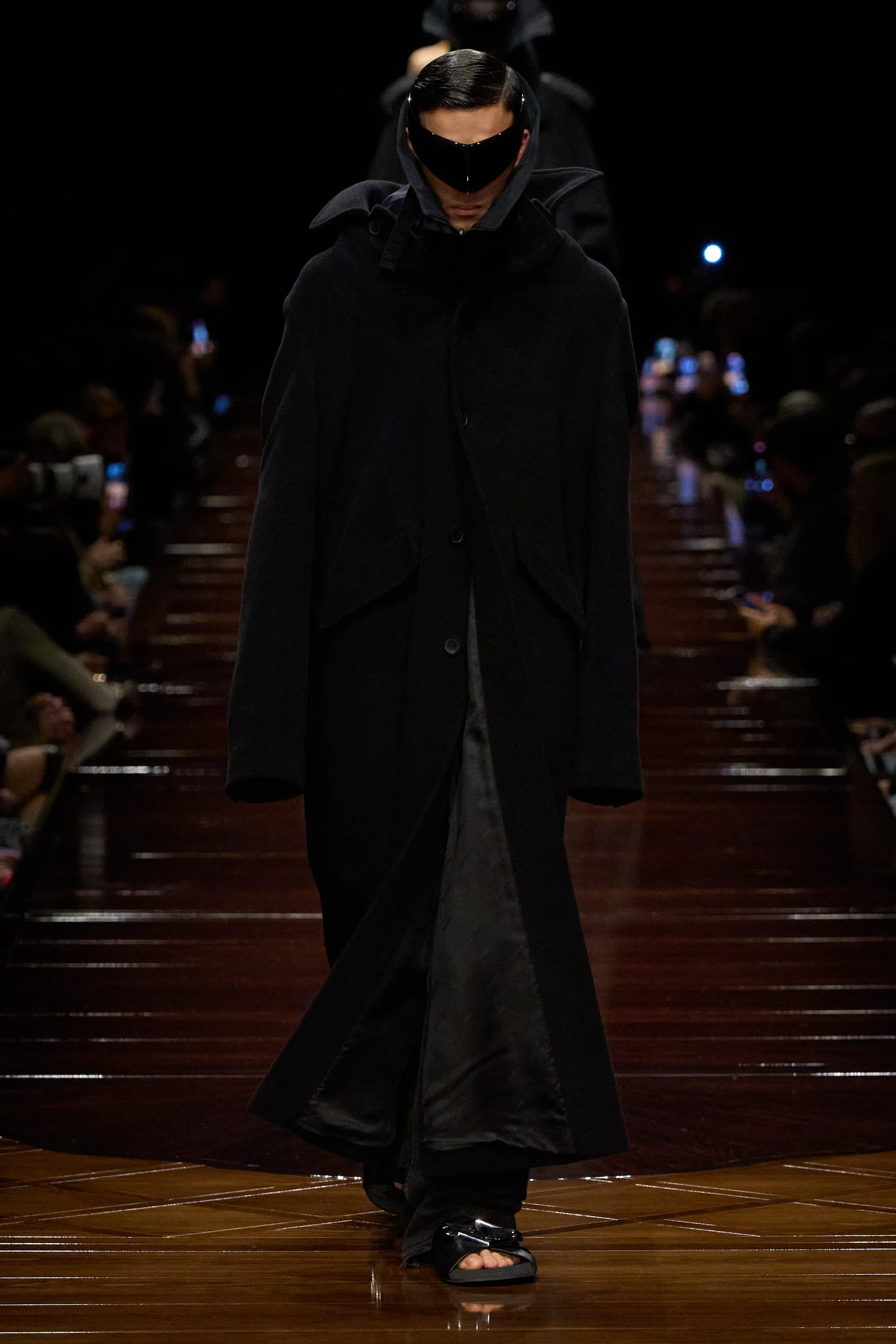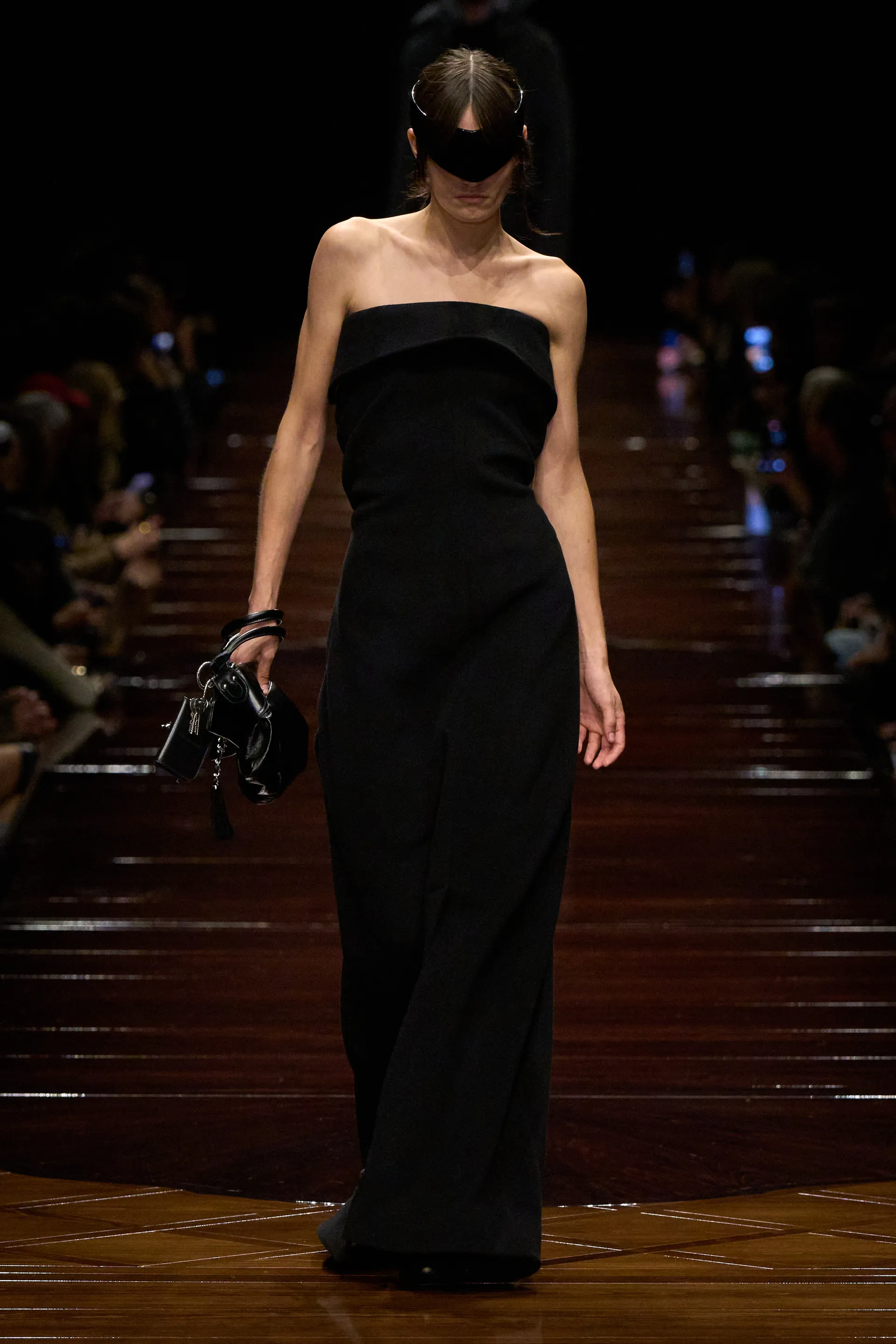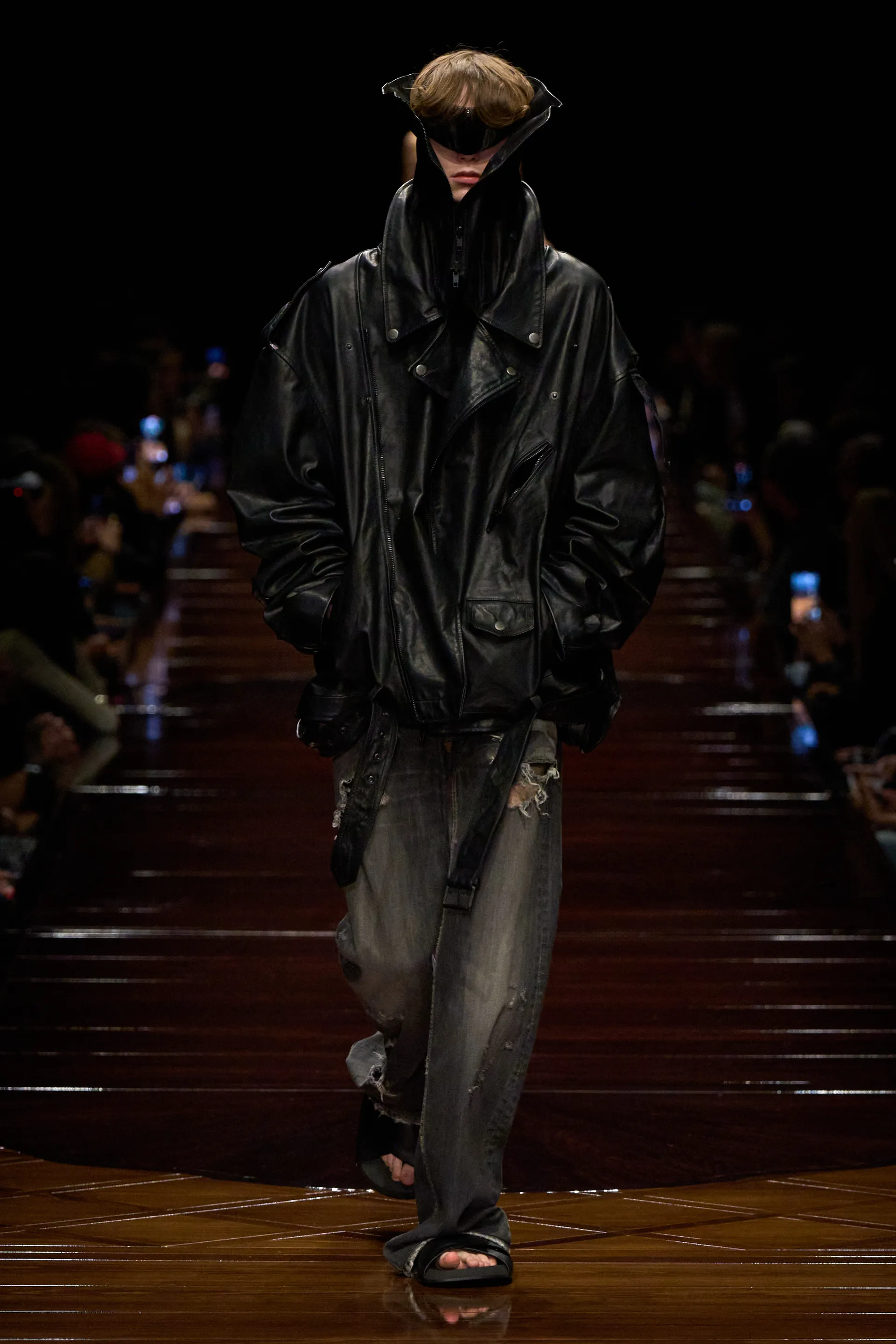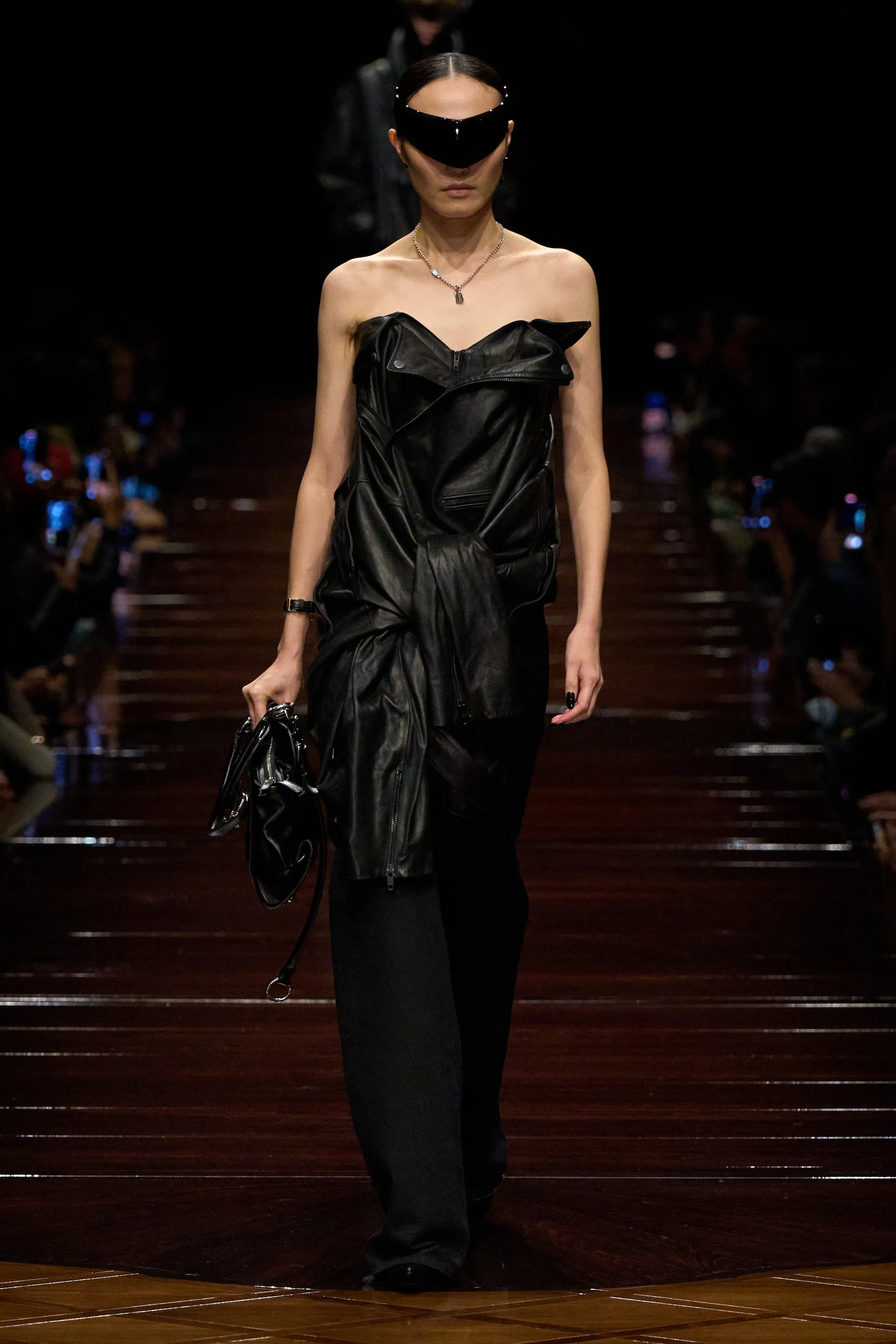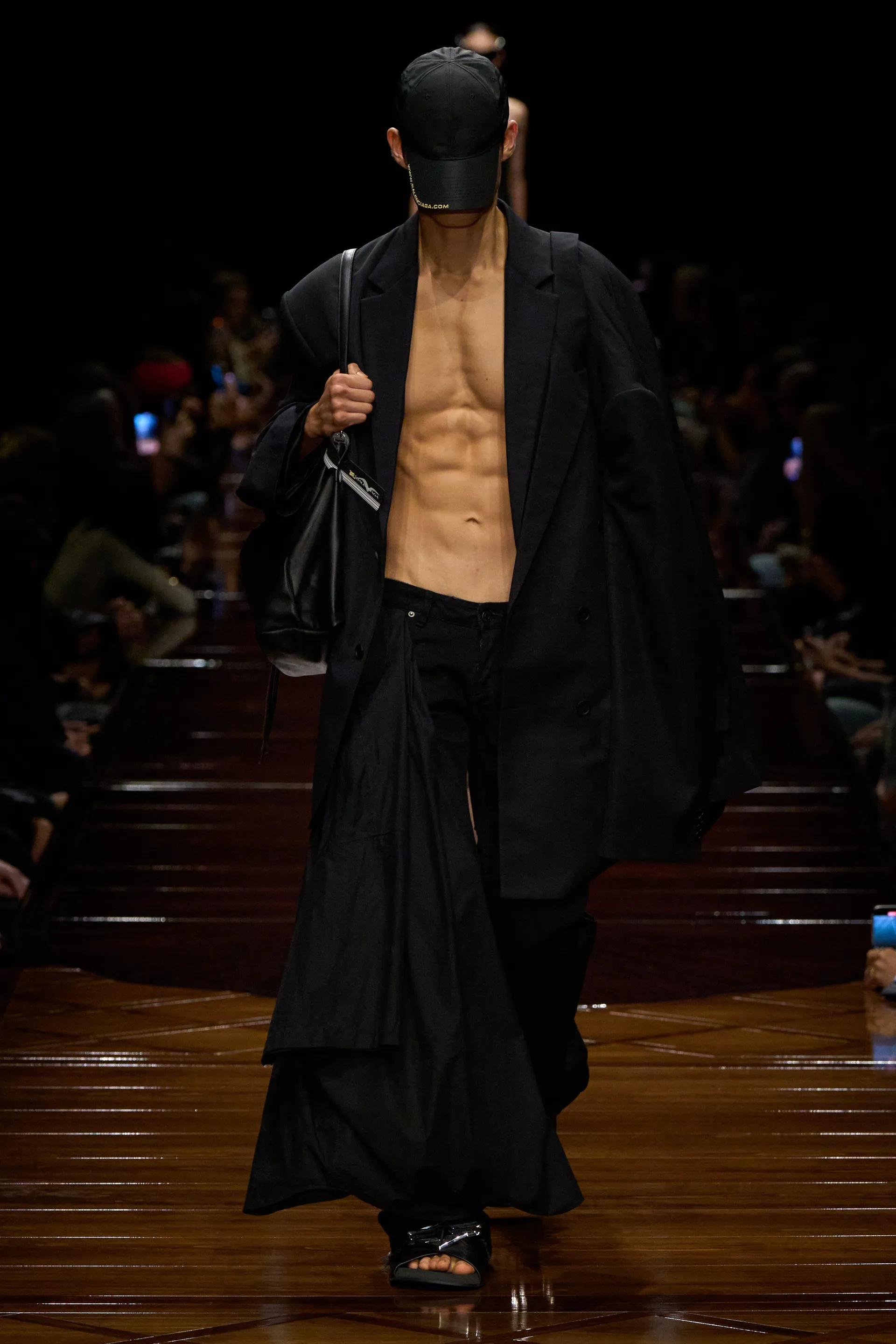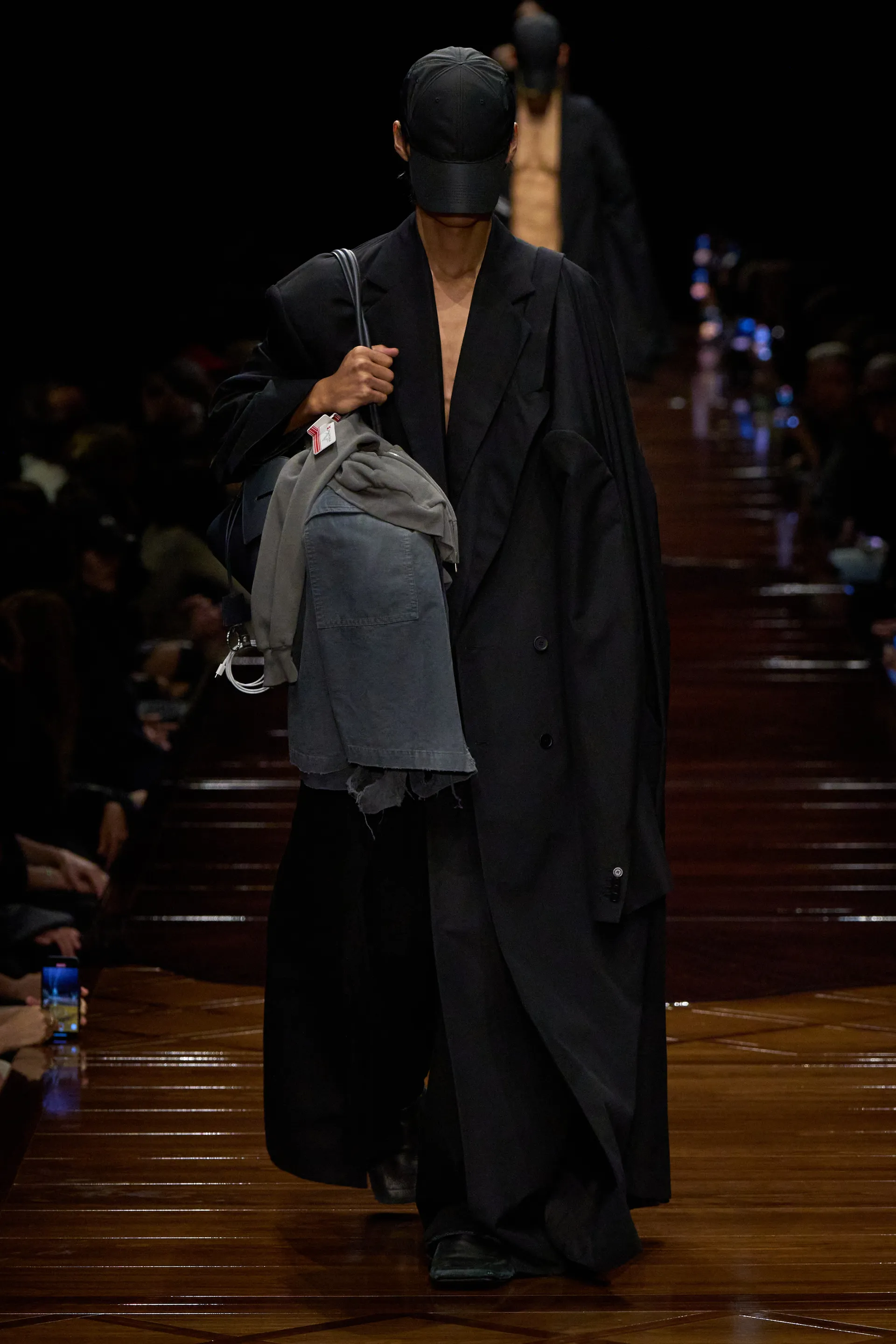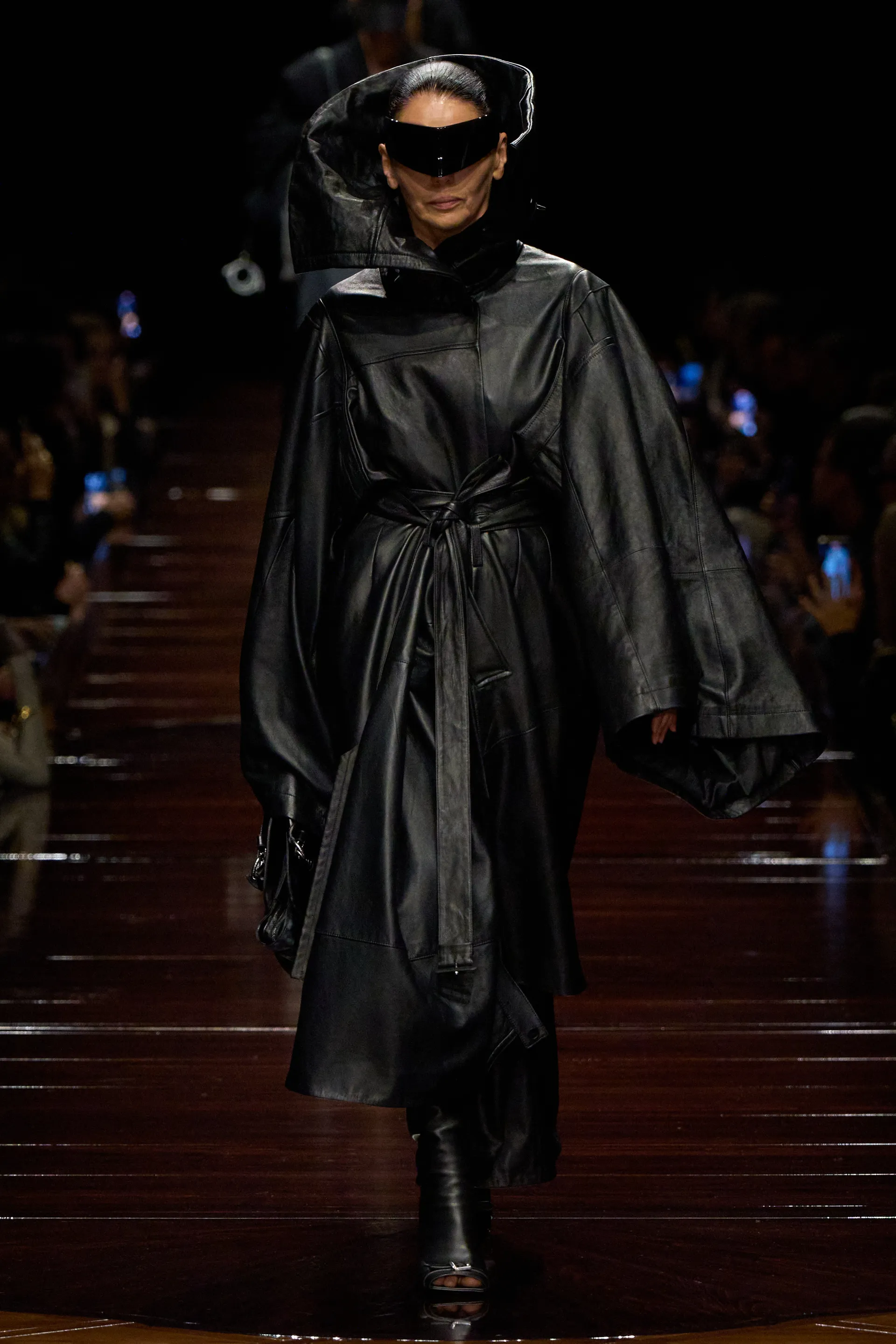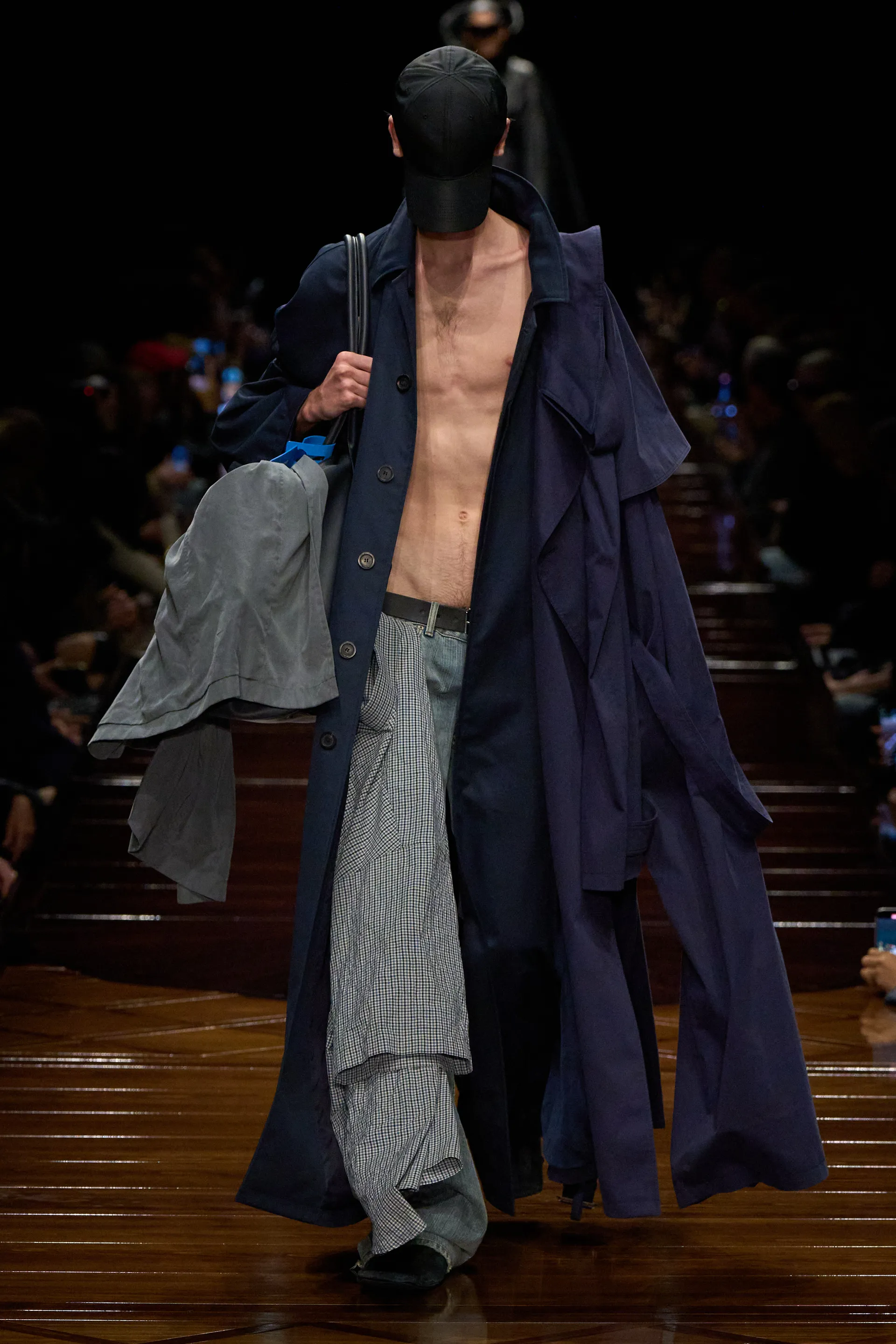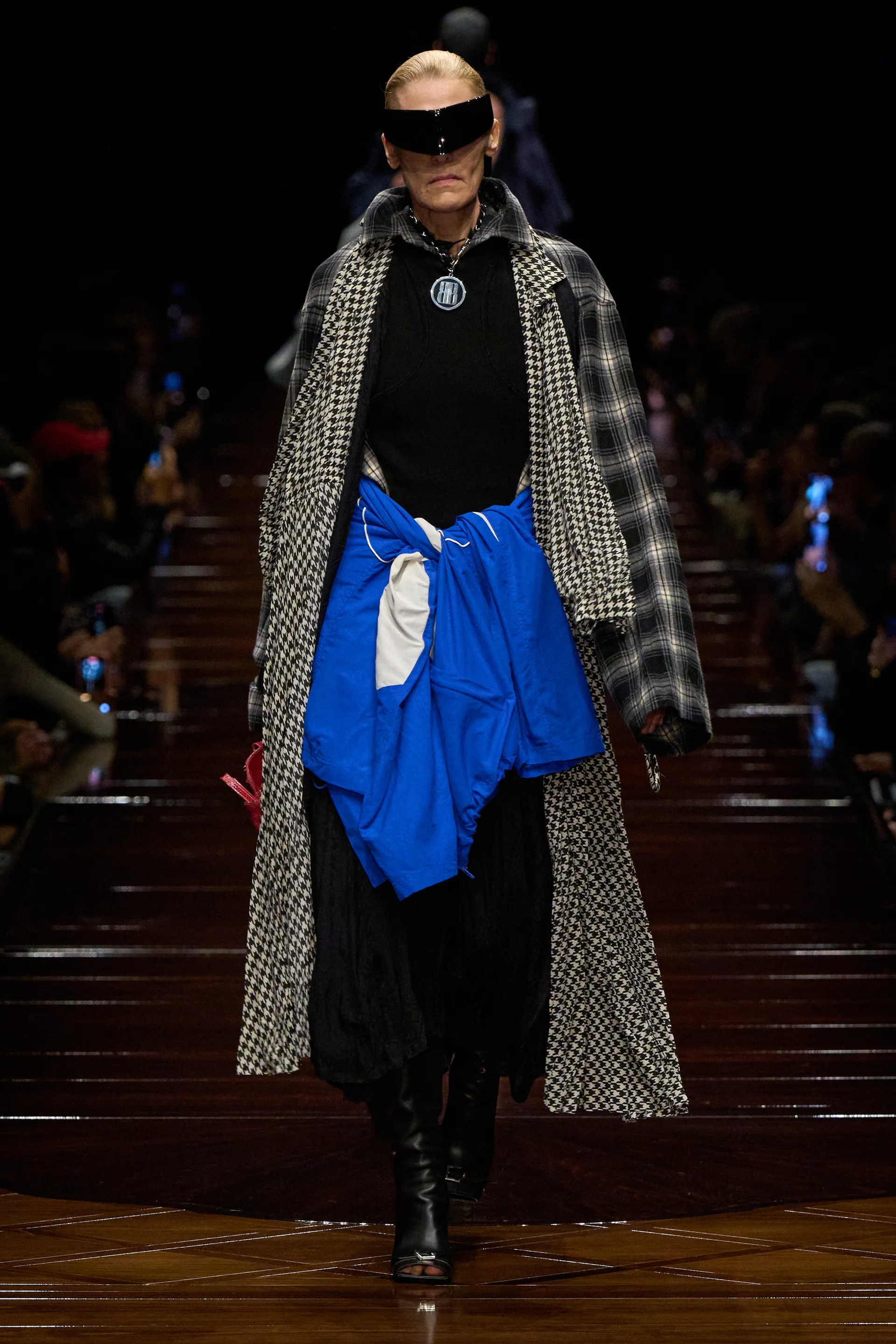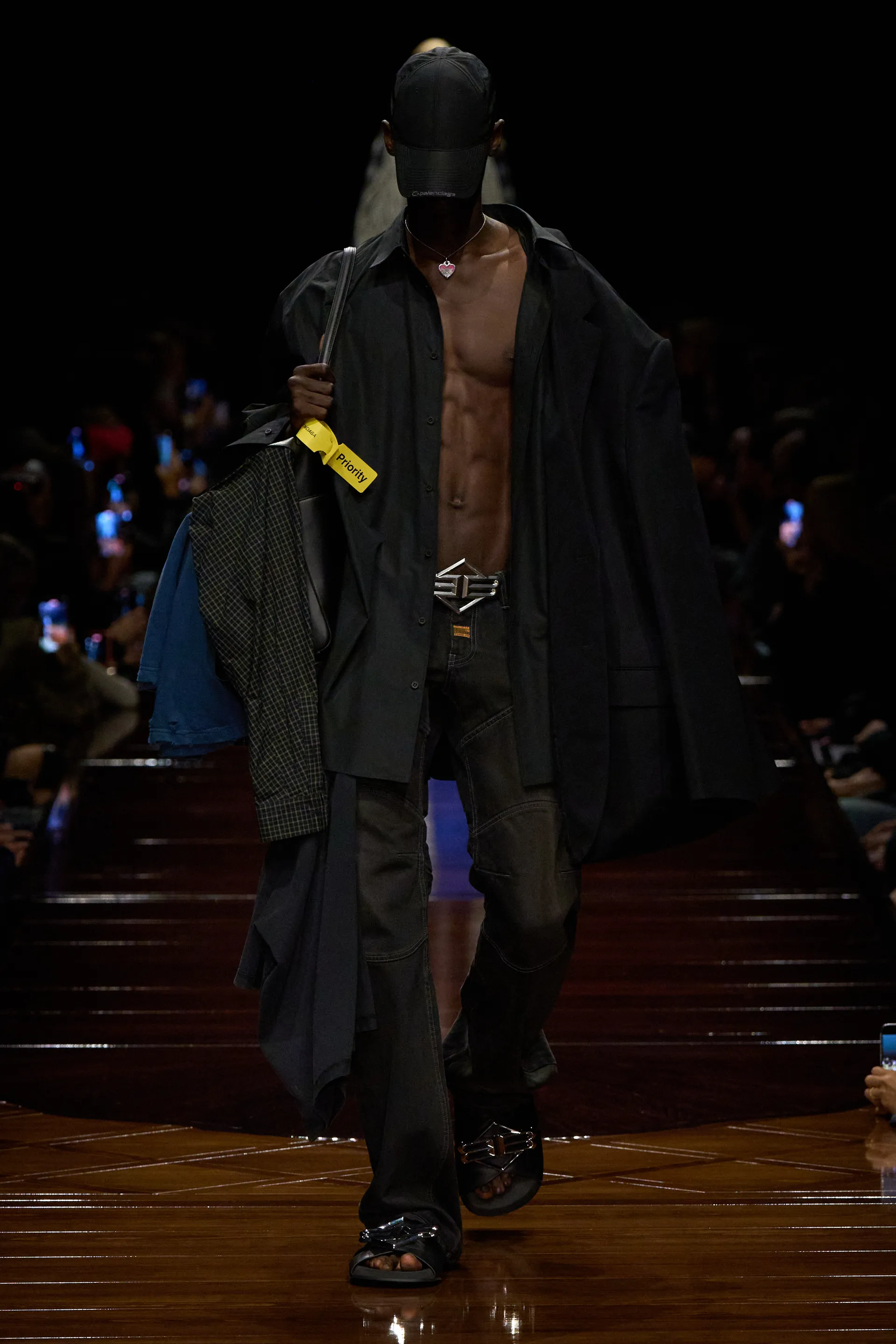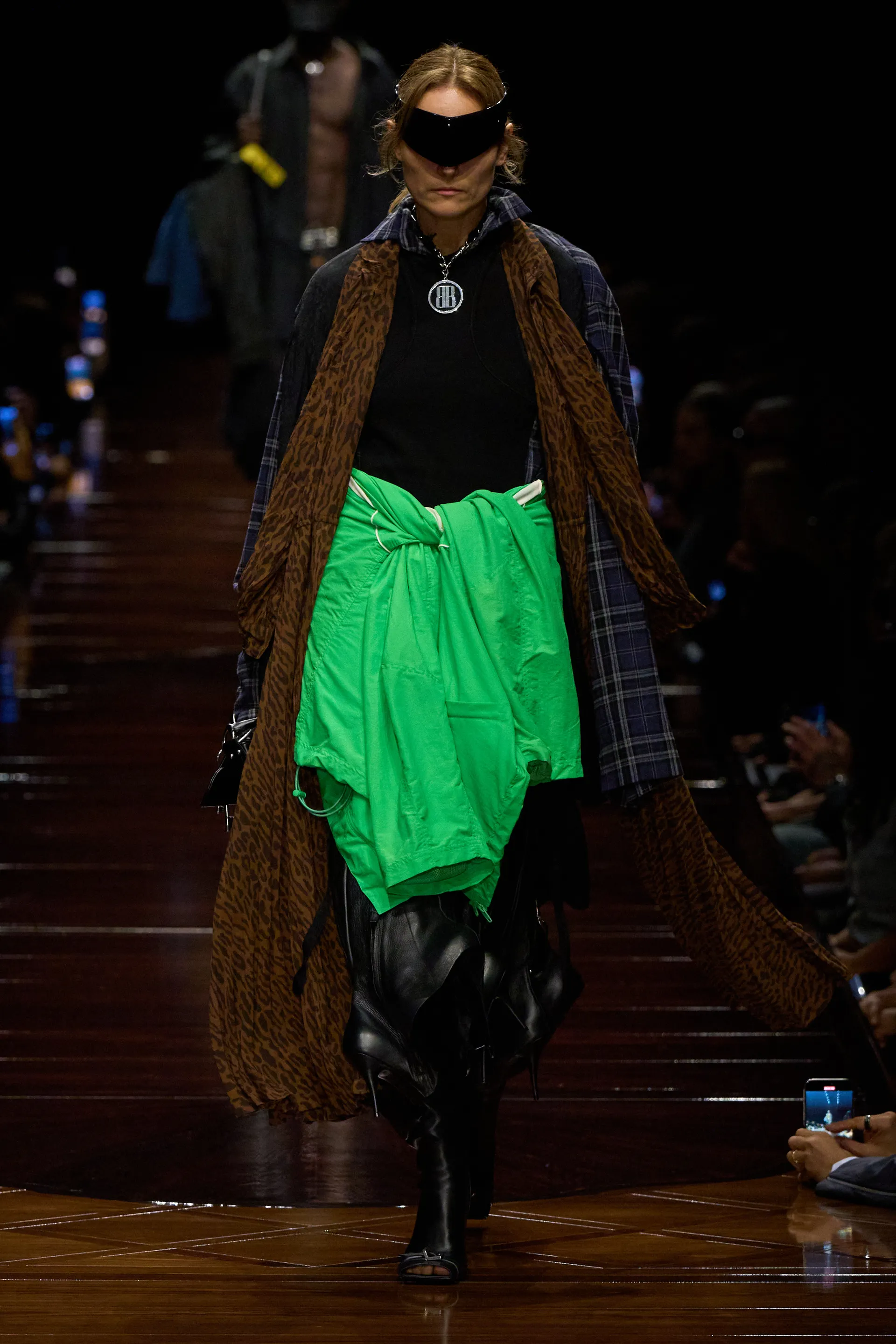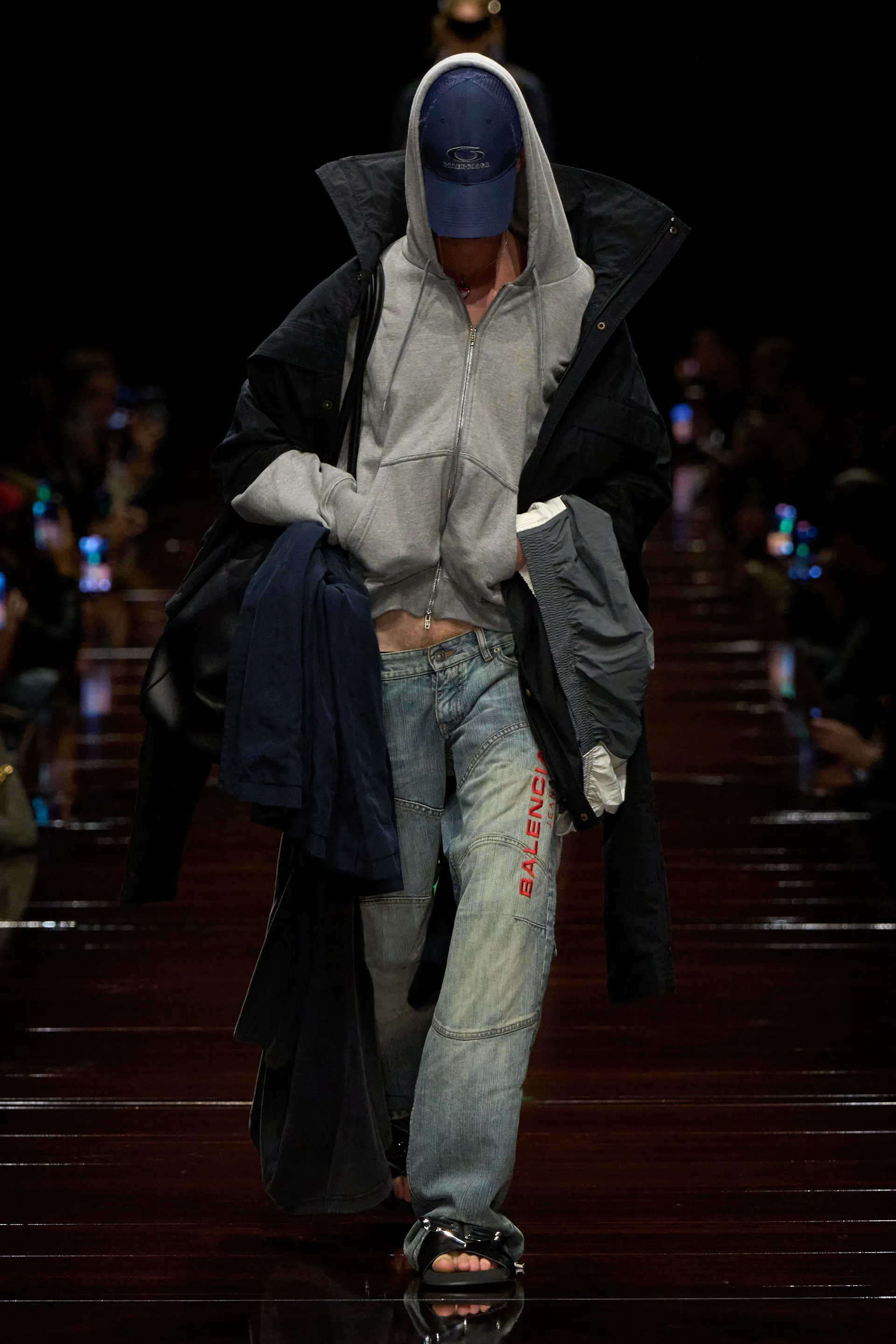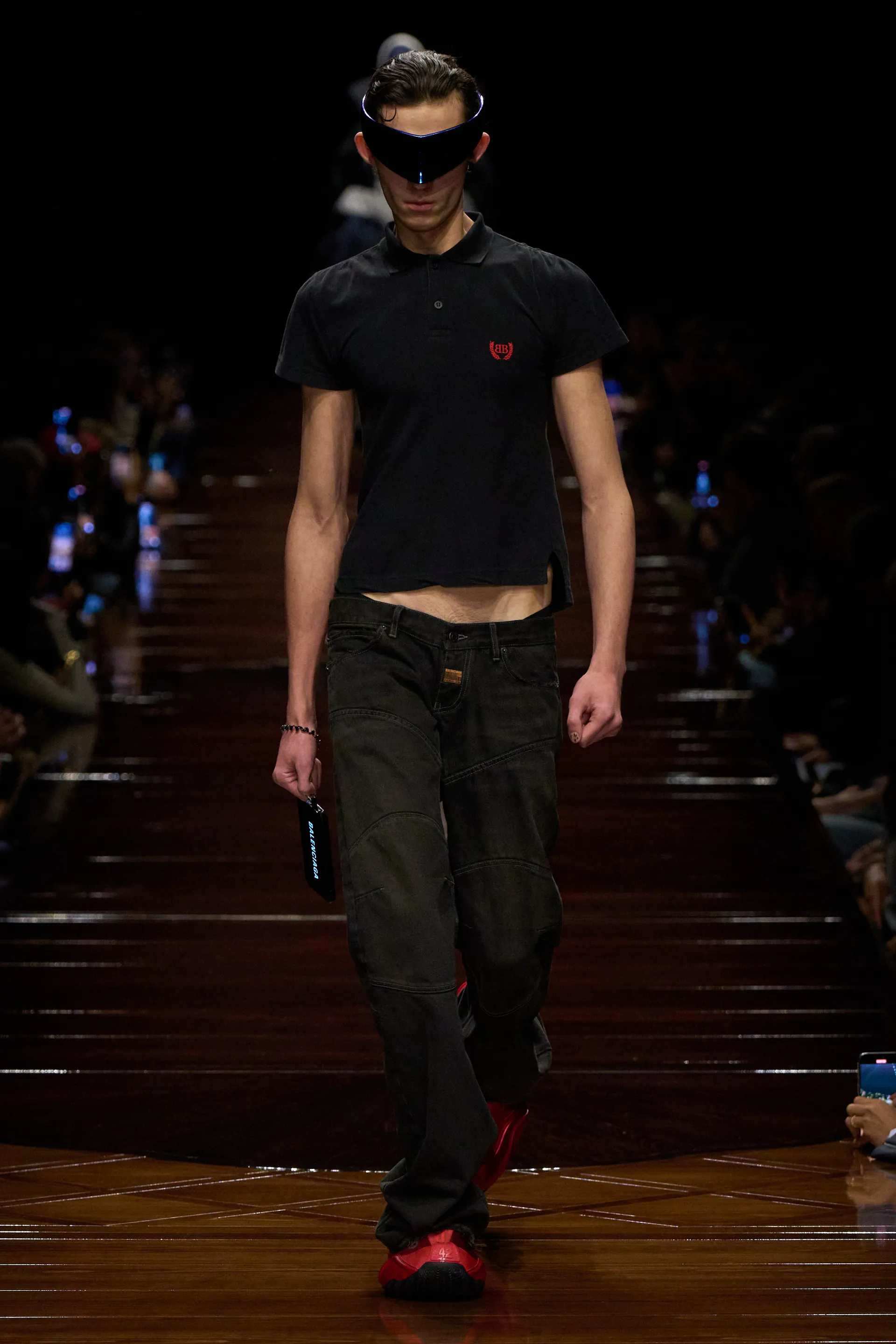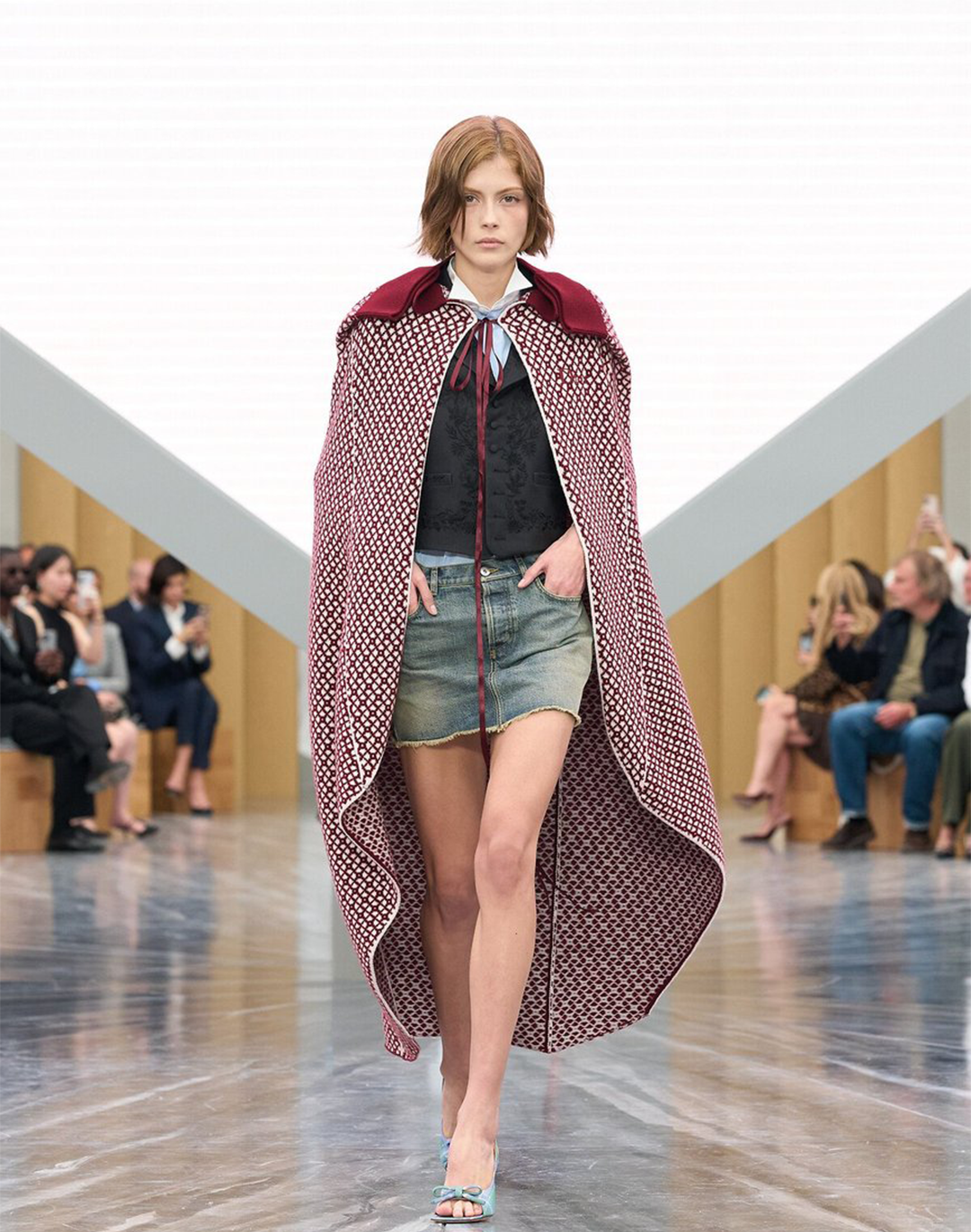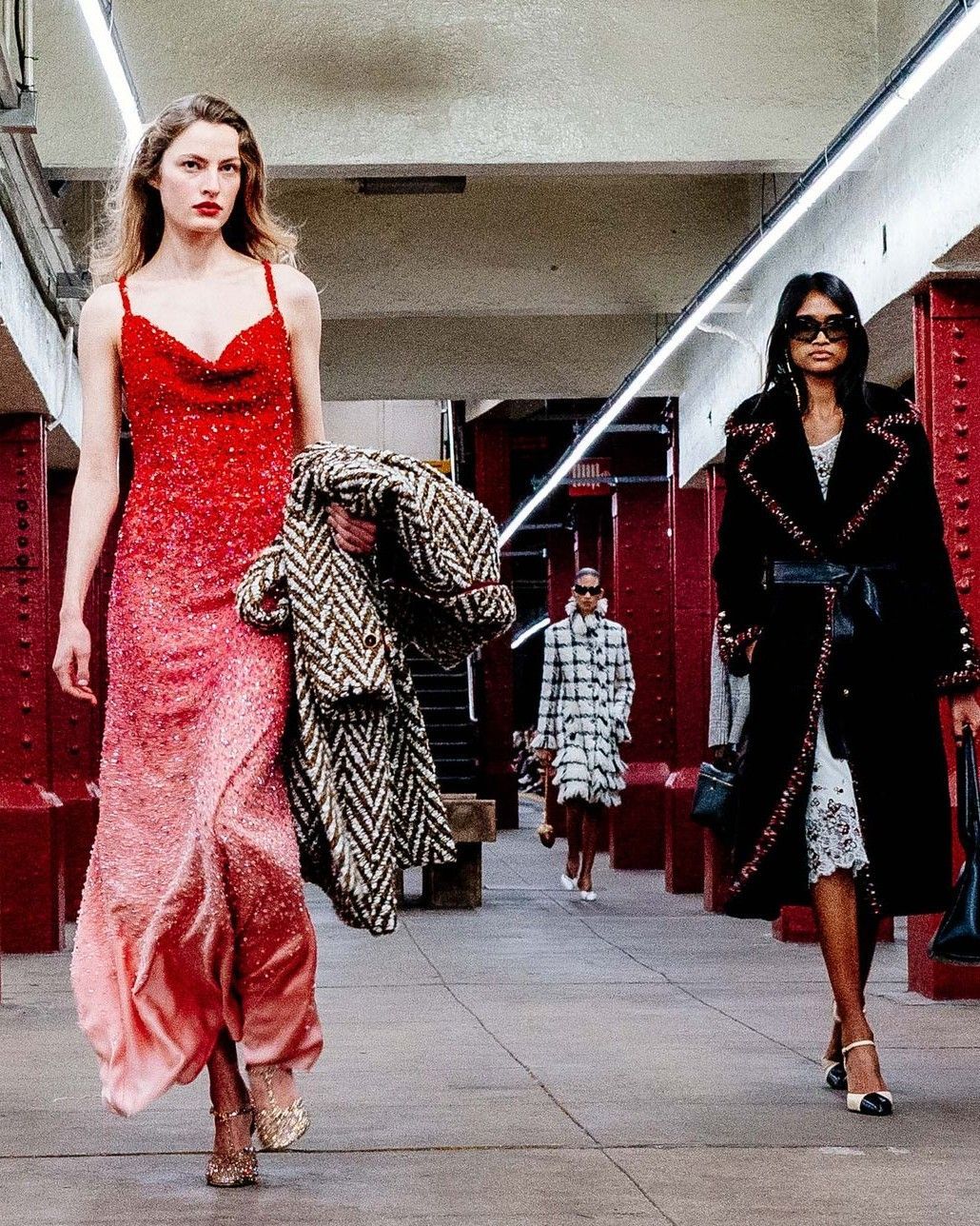
Demna narrates himself in Balenciaga's SS25 show An identity that is also an artistic language and the evolution of a wardrobe
The Balenciaga SS25 show was preceded by the release of a note written by Demna, in which the designer recalled how his passion for fashion began by staging fashion shows with paper cut-out figures on his grandmother's kitchen table. And indeed, yesterday’s runway simulated a very long dining table, with the front row made up of chairs for the guests. The show began on a seductive note: the version of Why Don’t You Do Right sung by Jessica Rabbit in Who Framed Roger Rabbit? accompanied a series of illusionary lingerie looks featuring invisible tights that mimicked a naked body dressed only in a bustier. These looks gradually became “more covered” until the final evening gowns. The progression was therefore reversed: the show started with an exposed and vulnerable body, even if only seemingly so, and gradually added more pieces, evolving into a “modern” everyday wardrobe that then developed into couture, culminating in the synthesis between Demna and the founder of the maison. Throughout this, the music changed, shifting from Jessica Rabbit to a remix of Britney Spears' Gimme More. The choice of the song doesn't seem accidental: when it was released in 2007, Britney was in the midst of her public meltdown, journalists were harassing her, and the media was increasingly judging her as unstable. The song was a clear critique of the public and tabloid press, as well as the music industry, which continued to exploit her and demand more. The fact that the collection was literally “served” on a table set for critics, managers, and celebrities suggests that Demna may be saying that he, his creativity, and his personal story are being served up to these guests and the public.
After the “naked” looks, the central section of the show seemed to represent the everyday clothes that Demna himself wears or conceives as “basics” for men and women—of course with exaggerated proportions and, this season, featuring a new styling of mega-puffed neoprene jackets and ultra-low-waisted jeans that expose the models’ entire lower bellies. It was the part of the show that, after the initial starting box, seemed to represent the foundation of Demna's stylistic identity: raver jeans, track suits, mega-coats, and mega-sneakers. These simple garments then transition from being themselves to becoming components of composite outfits: coats wrapped around the head like hoods, followed by “cut-up” jeans that reveal the thighs just below the hip. Finally, the more avant-garde outfits begin: from simple dressing, it moves to literal overdressing with pieces that evoke the ultra-layered items (like the famous 7-in-1 parka) from previous collections, which now create looks that are dramatic masses of draping, composed of various everyday pieces like blazers and track jackets refunctionalized as purely ornamental styling elements: coats with a blazer hanging off the shoulder, hybrid hoodies from which men's boxers and sweatpants seem to explode from the pockets, and all those more chaotic looks that Demna has accustomed us to. It is Demna's original identity striving to become couture, or at least to create its lines from the prosaic initial parts—this is where the technical element begins to become avant-garde material.
In the final part, the evening section opens with a series of gala dresses that all bear the classic signs of Demna: total black looks, elegant silhouettes created from chaotic arrangements, bizarre proportions, and refunctionalized garments such as a pair of jeans that becomes the collar of a jacket. Multifunctional elements like funnel necks that turn into bustiers begin to emphasize the points of intersection that Demna has found with Balenciaga, as well as backless dresses with corset closures and those with exposed busts in flexible spandex wrapped in nylon, which glided over the torso like enormous bracelets; the Spencer jackets in double-breasted styles with super-structured shoulders, and another dress appeared to be made from a gigantic shirt tied around the body. Throughout, various accessories conveyed that type of “synthetic beauty” that Demna has conceived for the brand: the face-obscuring glasses that strip away any expressiveness, making the face resemble that of a robot; hats that can be worn in front of the face while still allowing vision; and the very high, glittering pantyhose integrated into a heeled shoe, with altered human proportions— all that alienating beauty to which we have gradually become accustomed. And while it may be true that Demna continues to revisit himself and his own languages in an almost obsessive manner from season to season, it must also be said that he always finds a way to make his designs more innovative while sharpening that perspective, that distinctive taste that fashion needs now more than ever.










































